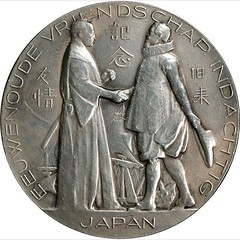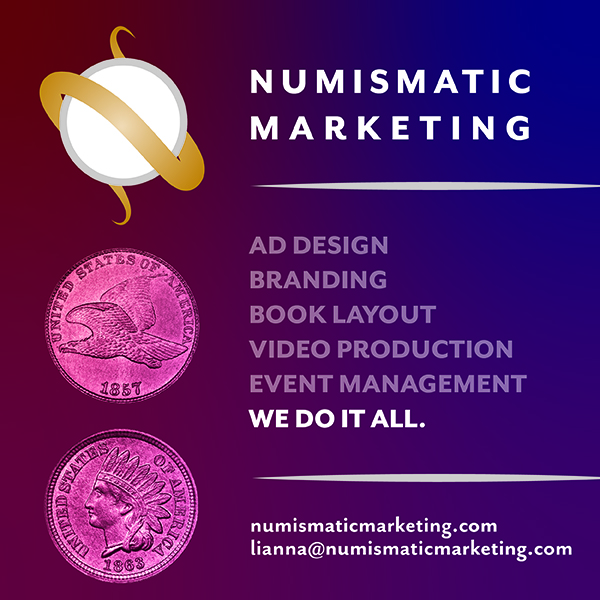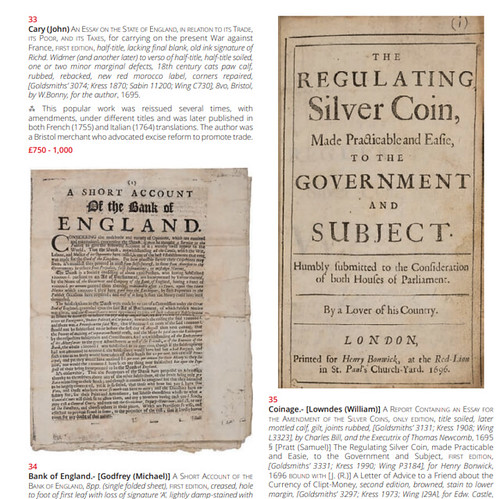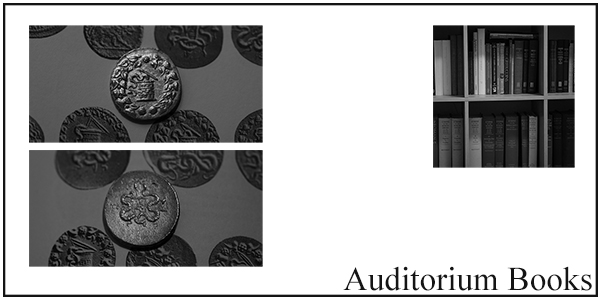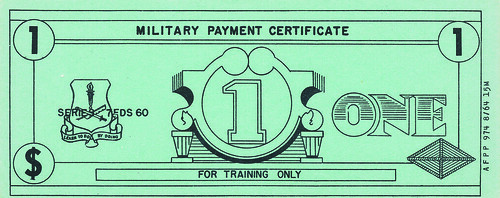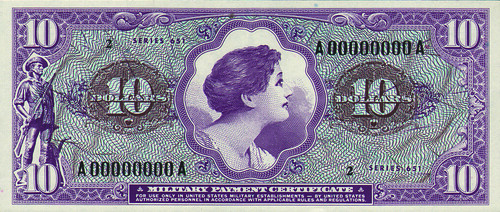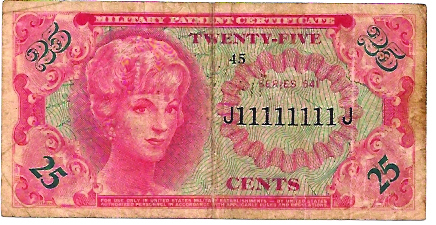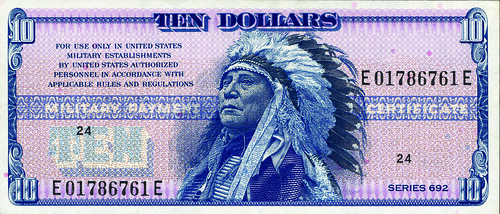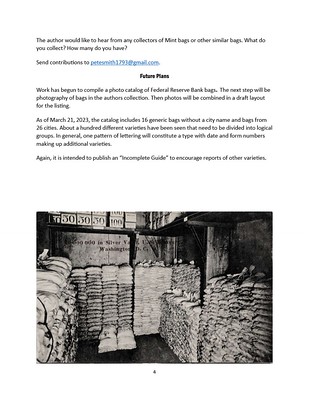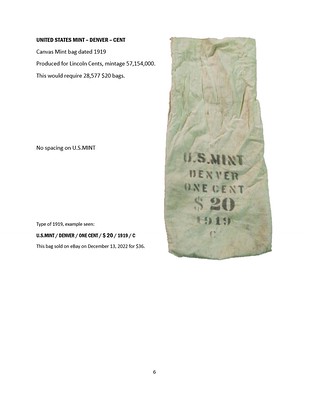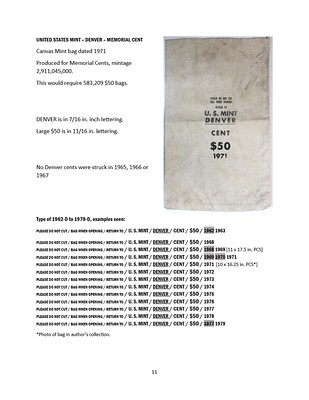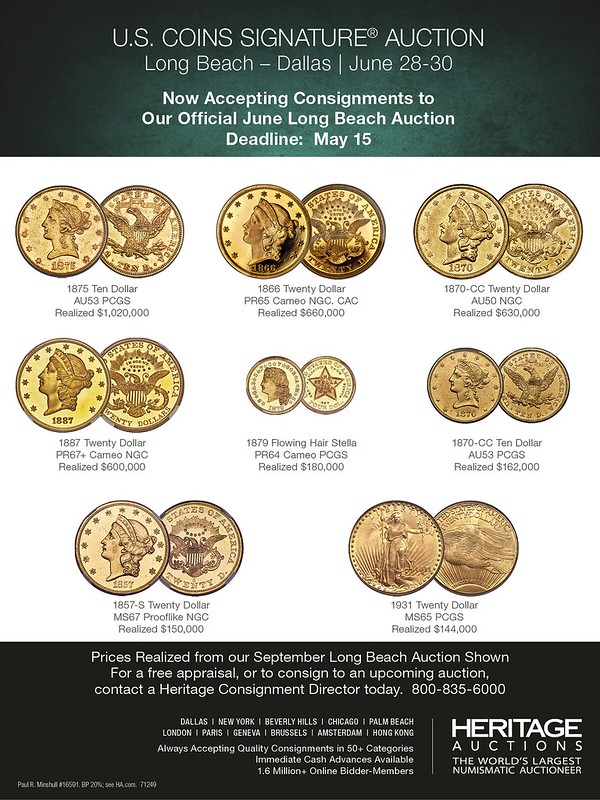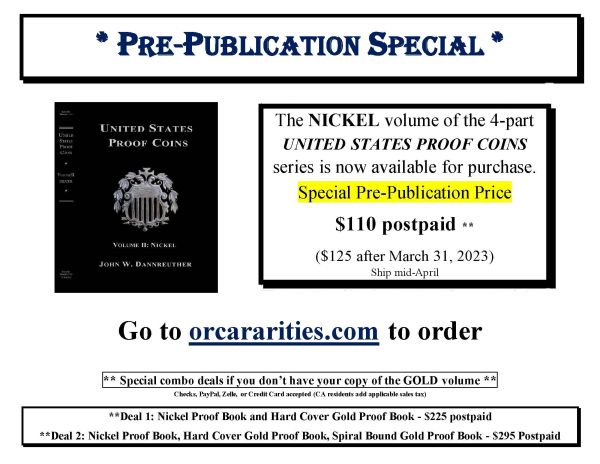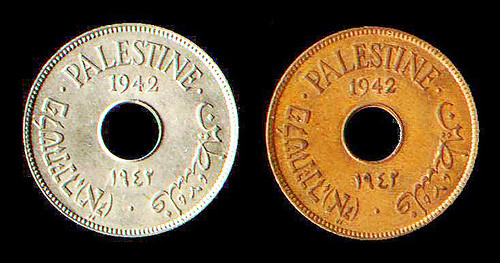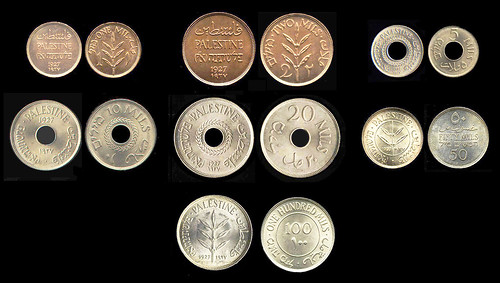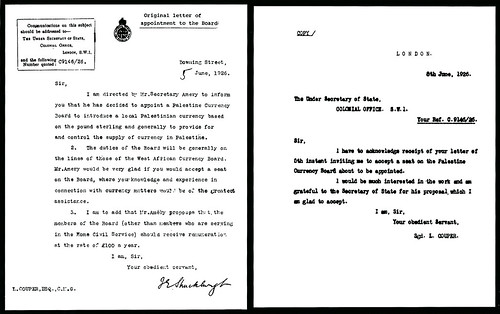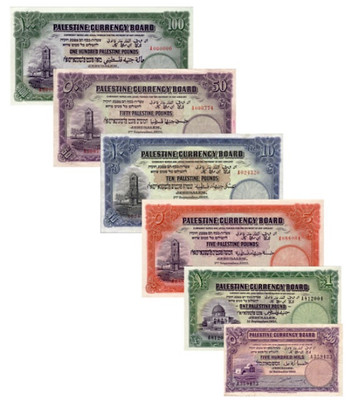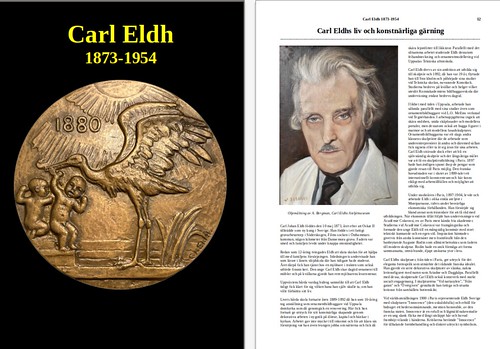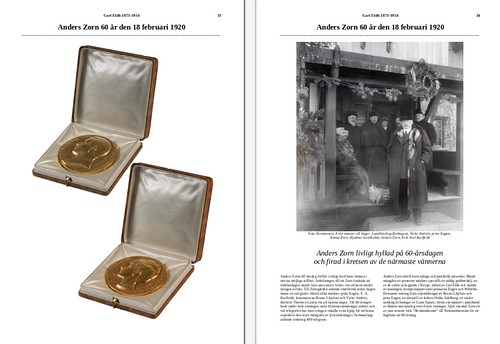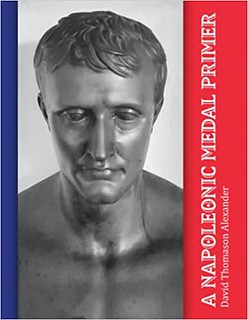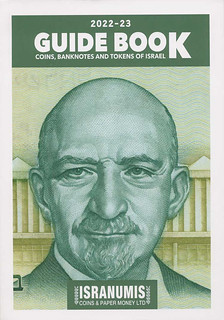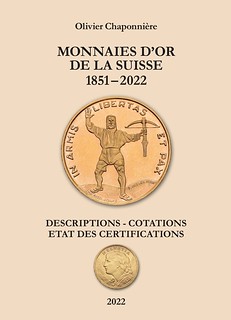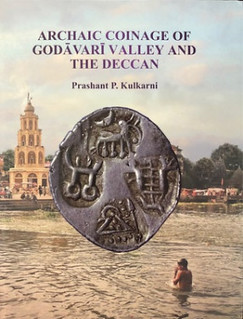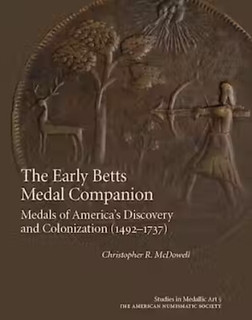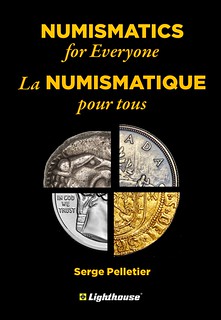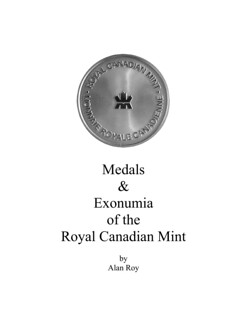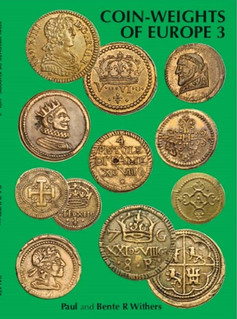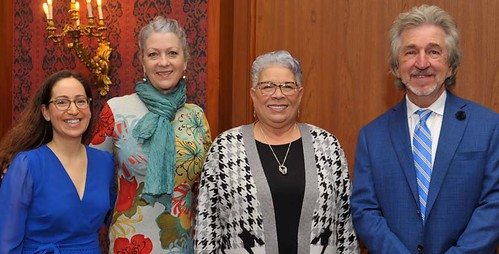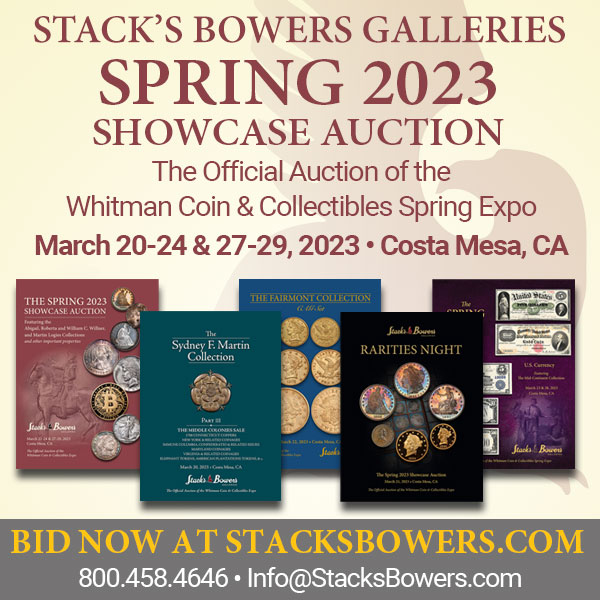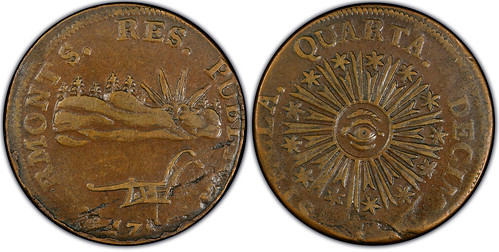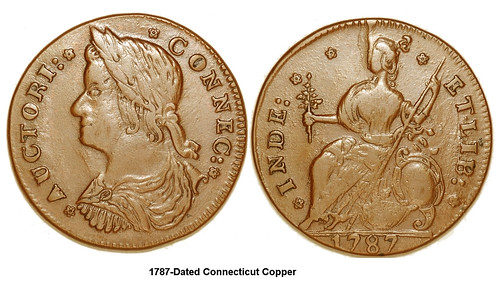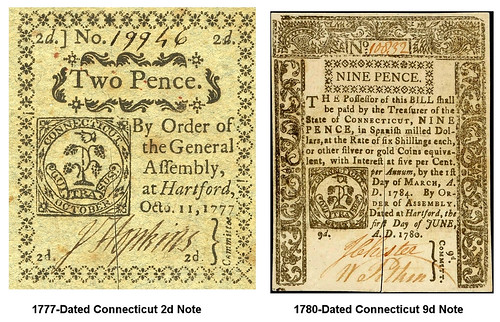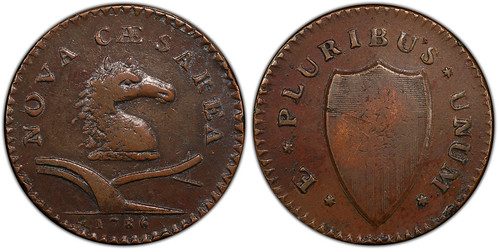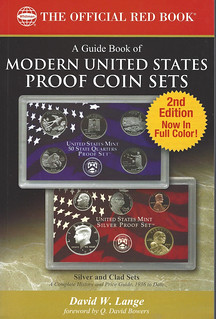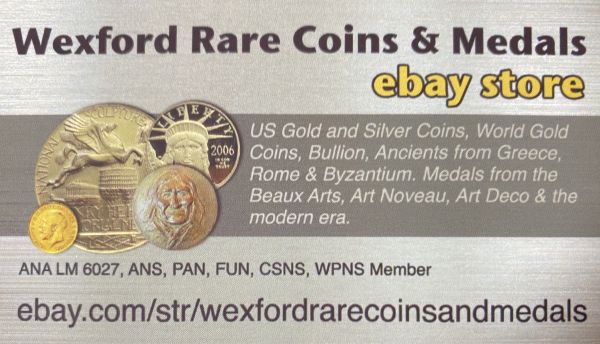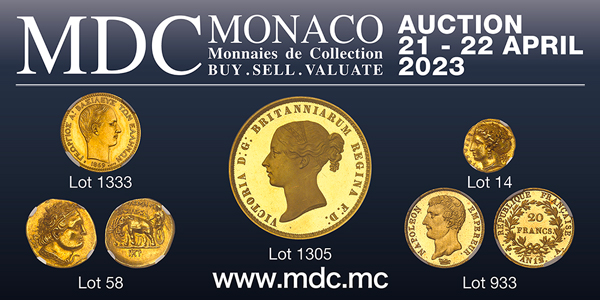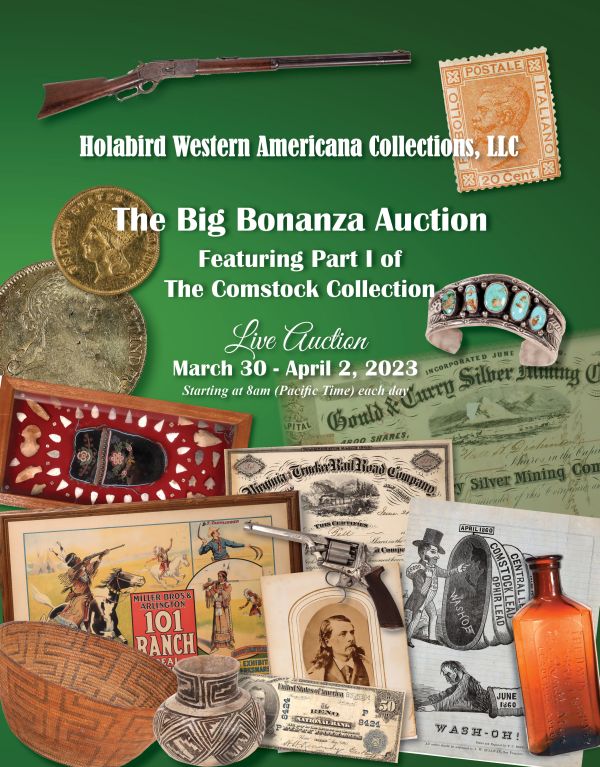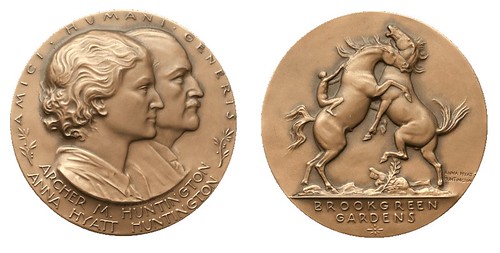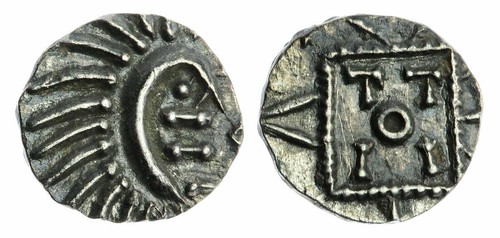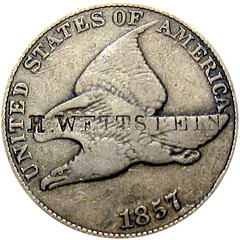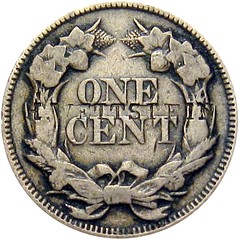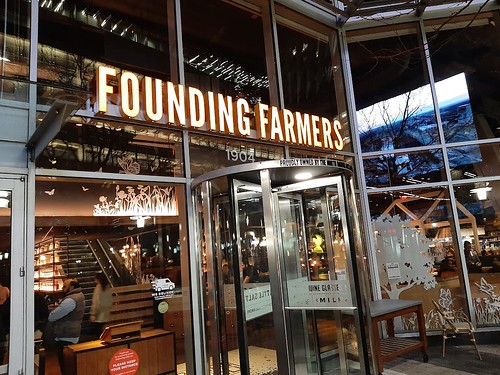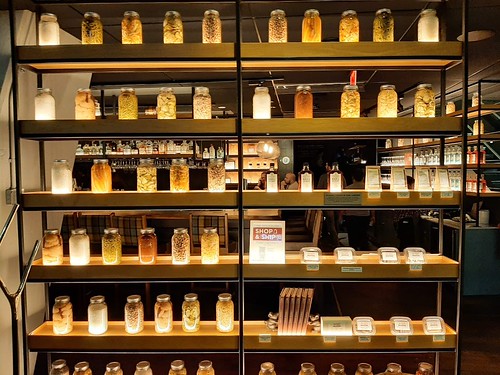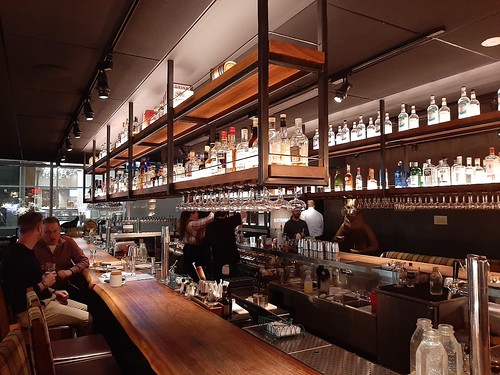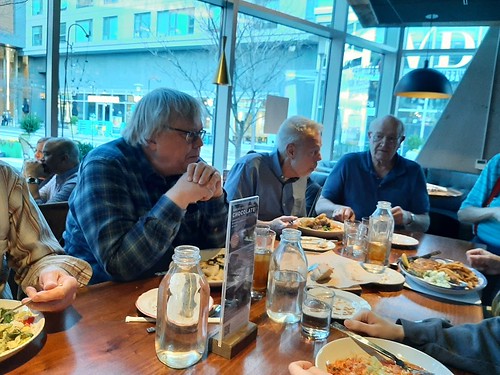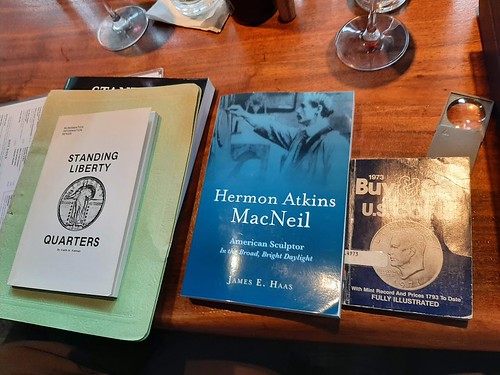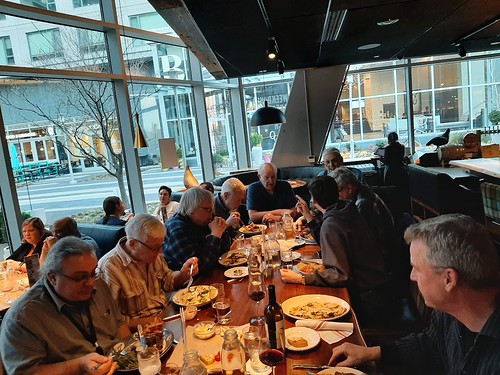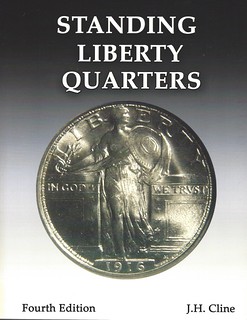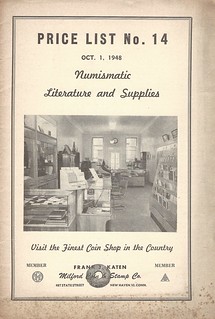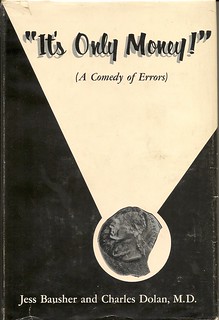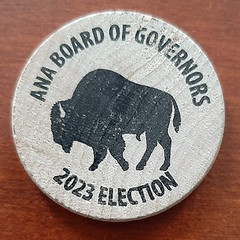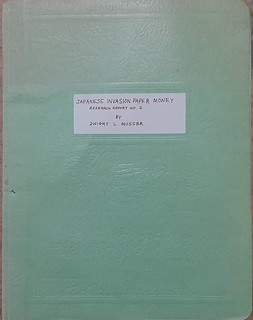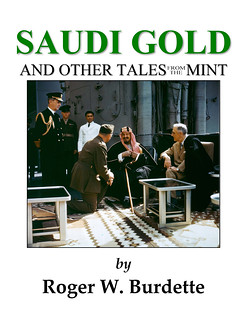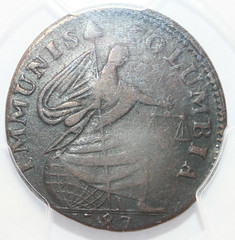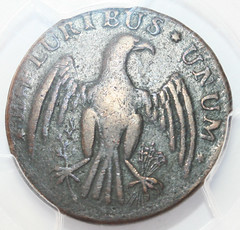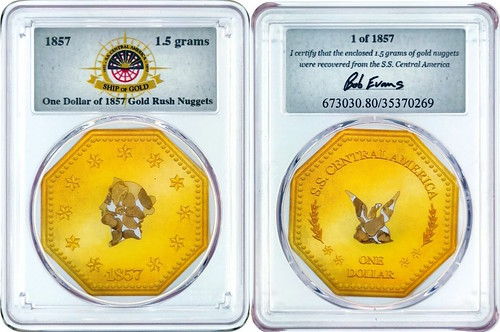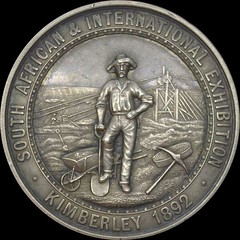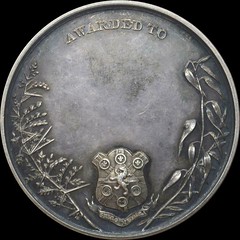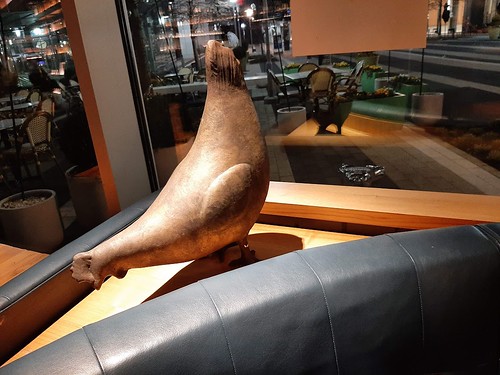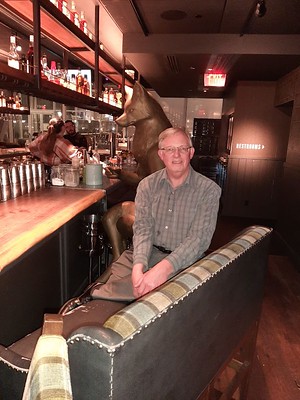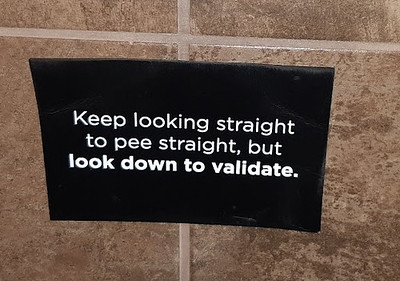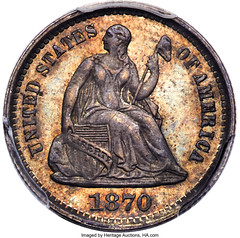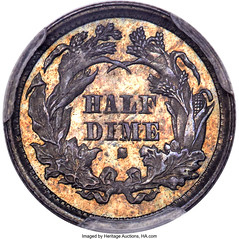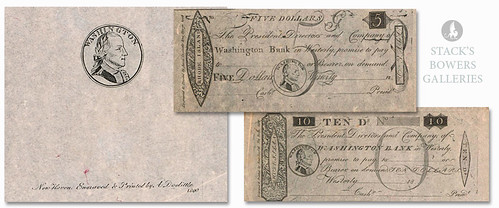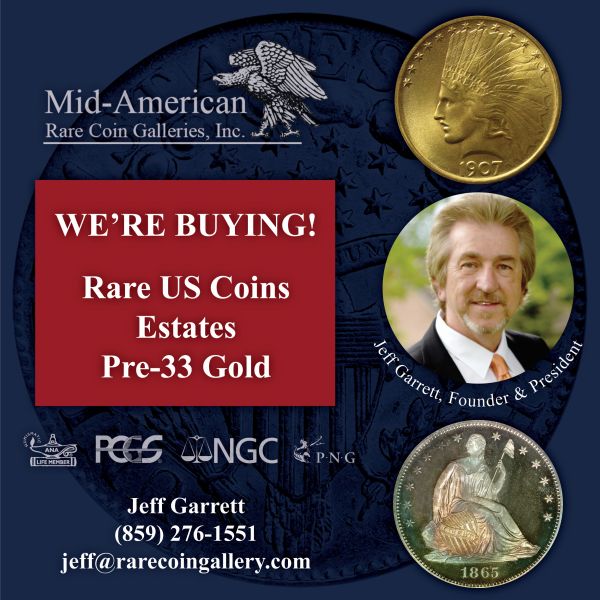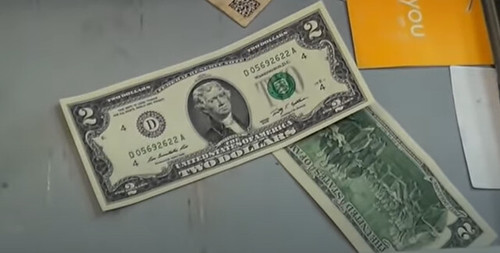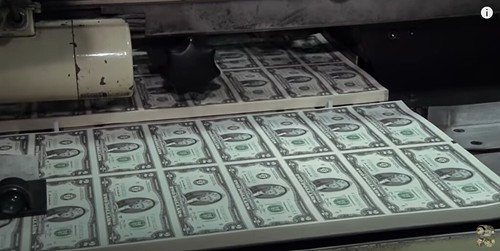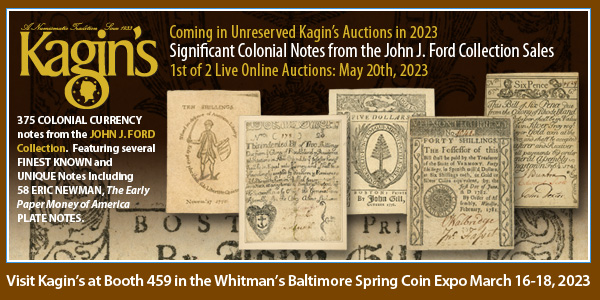
Visit our NBS Sponsors




About UsThe Numismatic Bibliomania Society is a non-profit association devoted to the study and enjoyment of numismatic literature. For more information please see our web site at coinbooks.org SubscriptionsThose wishing to become new E-Sylum subscribers (or wishing to Unsubscribe) can go to the following web page link MembershipThere is a membership application available on the web site Membership Application To join, print the application and return it with your check to the address printed on the application. Print/Digital membership is $40 to addresses in the U.S., and $60 elsewhere. A digital-only membership is available for $25. For those without web access, write to: Charles Heck, Treasurer AsylumFor Asylum mailing address changes and other membership questions, contact Chuck at this email address: treasurer@coinbooks.org SubmissionsTo submit items for publication in The E-Sylum, write to the Editor at this address: whomren@gmail.com BUY THE BOOK BEFORE THE COINSale CalendarWatch here for updates! |
- WAYNE'S WORDS: THE E-SYLUM MARCH 26, 2023
- JOHN DRURY RARE BOOKS STOCK AUCTIONED
- NEW BOOK: EASY MONEY
- NEW BOOK: SOVEREIGN OF THE MARKET
- NEW BOOK: MILITARY PAYMENT CERTIFICATES, 5TH ED.
- NEW BOOK: U.S. MINT COIN BAG GUIDE
- NEW BOOK: COINS OF THE FOURTH ABBASID PERIOD
- NEW BOOK: COINS OF THE SIKH EMPIRE
- NEW BOOK: COINS OF THE ICENI
- NEW BOOK: MONNAIES ROYALES FRANÇAISES
- NEW BOOK: THE PALESTINE CURRENCY BOARD
- NEW BOOK: TOKENS OF LOVE, LOSS AND DISRESPECT
- NEW BOOK: MEDALS AND ARTISTS
- IAPN 2023 BOOK PRIZE NOMINATIONS
- NEWMAN PORTAL ADDS U.S. MINT COIN BAG GUIDE
- SMITHSONIAN MARKS 100 YEARS OF U.S. MINT COLLECTION
- MORE ON CONFEDERATION-ERA COPPERS
- NOTES FROM E-SYLUM READERS: MARCH 26, 2023
- FEUCHTWANGER THREE CENT PIECE ORIGINS
- ROBERT COPSKEY MEDALS
- MOAF FORUM: THE INVENTION OF MODERN CURRENCY
- COAC 2023: 18TH & 19TH CENTURY DESIGN
- ANA 2023 YOUNG NUMISMATIST LITERARY AWARDS
- ANNA HYATT HUNTINGTON (1876-1973)
- NUMISMATIC NUGGETS: MARCH 26, 2023
- WAYNE'S NUMISMATIC DIARY: MARCH 26, 2023
- IDES OF MARCH COIN RETURNED TO GREECE
- DISCOVERING THE 1870-S HALF DIME
- GEORGE WASHINGTON ON EARLY PAPER MONEY
- CONFEDERATE CURRENCY COUNTERFEITER CAUGHT
- THE TWO DOLLAR BILL DOCUMENTARY
- ZIMBABWE'S LATEST SMALL CHANGE PANIC
- LOOSE CHANGE: MARCH 26, 2023
Click here to read the thin version on the web
Click here to subscribe
Click here to access the complete archive
To comment or submit articles, reply to whomren@gmail.com
Content presented in The E-Sylum is not necessarily researched or independently fact-checked, and views expressed do not necessarily represent those of the Numismatic Bibliomania Society.
WAYNE'S WORDS: THE E-SYLUM MARCH 26, 2023
 New subscribers this week include:
Pablo Morales from Guaymas, Sonora, Mexico, courtesy Adrián González-Salinas;
Daniel Baumbach, and
Jerzy Chalupski.
Welcome aboard!
New subscribers this week include:
Pablo Morales from Guaymas, Sonora, Mexico, courtesy Adrián González-Salinas;
Daniel Baumbach, and
Jerzy Chalupski.
Welcome aboard!
Thank you for reading The E-Sylum. If you enjoy it, please send me the email addresses of friends you think may enjoy it as well and I'll send them a subscription. Contact me at whomren@gmail.com anytime regarding your subscription, or questions, comments or suggestions about our content.
NOTE: Jeff Shevlin reports that anyone that orders his new So-Called Dollars Volume I book from seeing the ad in The E-Sylum will receive a FREE copy of his award-winning book "So-Called Dollars from the Pacific Coast Expositions", while supplies last.
This week we have a whopper-sized issue, driven by some colonial coin controversy and a wealth of new book information, thanks in part to our friends at IAPN. We open with a literature sale, ELEVEN new (or recent) books, the IAPN book prize nominees, an update from the Newman Numismatic Portal, and more.
Other topics this week include military payment certificates, money of the Palestine Currency Board, coin bags, Feuchtwanger three-cent tokens, the 2023 Coinage of the Americas Conference, the 1870-S Half Dime, counterfeit Confederate notes, two dollar bills, and Zimbabwe's small change panic.
To learn more about David Edmunds, the American invention of modern money, Sikh religious tokens, coins of the Iceni, the U.S. Mint Coin Cabinet, Civil War artifacts, Proof Set packaging, sculptor Anna Hyatt Huntington, Gene Hessler's smallest book, the South African & International Exposition, and the quilled porcupine, read on. Have a great week, everyone!
Wayne Homren
Editor, The E-Sylum
JOHN DRURY RARE BOOKS STOCK AUCTIONED
Patrick Parkinson alerted me to the sale of the remaining stock of the late U.K.-based rare book seller David Edmunds. Thank you. -Editor
Patrick writes:
"I recall that you have previously reported on his death. His library will be auctioned on March 30. Not sure if there is anything numismatic here. Anyone collecting British banking history would have to consider this a very important sale."
Here's an excerpt from the catalogue forward by Jenny Edmunds. -Editor
BOOKS FROM THE REMAINING STOCK OF JOHN DRURY RARE BOOKS
DAVID EDMUNDS (1939-2022)
 Many will already know that David tragically died in a car accident in February last year. He was on
his way to view a few items in an auction in Colchester which is what he loved to do, and which had
been his passion and working life for almost 60 years.
Many will already know that David tragically died in a car accident in February last year. He was on
his way to view a few items in an auction in Colchester which is what he loved to do, and which had
been his passion and working life for almost 60 years.
David grew up in a huge rambling rectory in a tiny village in northwest Essex where his father was the Anglican parson. There were the remains of a Roman villa in fields nearby and David and his brother spent many happy hours digging and finding hundreds of ancient coins and other artefacts. This evidently sparked a love of antiquities and in particular collecting coins and medals. He later read modern history at Jesus College, Cambridge, and his knowledge of English history was immense. His coin and medal collection grew, and with it, inevitably, his research into the collection of the required books on the subject. Thereby began acquisition of numismatic books, which before long grew into a full-time business.
David called the business John Drury Rare Books, rather than David Edmunds Rare Books (because I didn't want people turning
up at the house with their old family bibles
!), and, in any case, Drury was a family name. The first 30 or so catalogues were
mostly on numismatics, but from then on, the subject range widened into economics, banking, law, philosophy, education, and
social history. In those days there were no computers, and I would come home after a day's work in Colchester and type up (on
a typewriter) catalogues from David's handwritten notes. And he never really mastered a keyboard – his cataloguing to the end
was entirely by hand. He only used the computer to look things up
– ODNB, Wikipedia, LHD, BL, etc. It wasn't long before it
became essential for me to become properly involved and become tech-savvy. And so our roles were defined – he did the
buying, cataloguing, and packing, while I did the database work, accounts, invoicing, photography, etc.
In 1979 we bought a derelict cottage on the south bank of the Stour Estuary, with no utilities at all, not even a road to get to the cottage, but it had a wonderful view. For 20 years we had no mains electricity, but had a huge, noisy, generator. In those days there was quite a lot of business done with the Japanese trade, and communication was generally by Fax. We had to explain to the Japanese that they would have to wait for 15 minutes or so before sending a fax, so that we could turn on the generator! How times have changed. We now just grumble about our slow broadband speed.
The other aspect of antiquarian bookselling is attending auctions and book fairs. I remember the excitement of ‘doing' our first Olympia and New York. These events were marvellous for catching up with the friends we made in the trade, and which I will miss greatly.
To read the auction catalogue, see:
FINE BOOKS, MANUSCRIPTS
AND WORKS ON PAPER
including books from the remaining stock of
John Drury Rare Books
(https://www.forumauctions.co.uk/media/auction_pdfs/16788142161121.pdf)
To read the earlier E-Sylum article, see:
DAVID R. DRURY EDMUNDS (1939-2022)
(https://www.coinbooks.org/v25/esylum_v25n09a08.html)
NEW BOOK: EASY MONEY
A new book by economic historian Dror Goldberg tells the origin story of modern money through the Massachusetts colony. See the article elsewhere in this issue about an online forum with the author and a colleague sponsored by the Museum of American Finance. -Editor
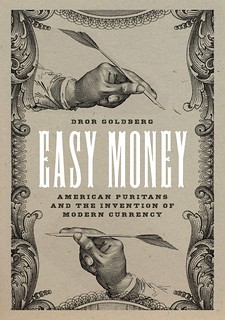 Easy Money
Easy Money
American Puritans and the Invention of Modern Currency
Dror Goldberg
A sweeping history of the American invention of modern money.
Economists endlessly debate the nature of legal tender monetary systems—coins and bills issued by a government or other authority. Yet the origins of these currencies have received little attention.
Dror Goldberg tells the story of modern money in North America through the Massachusetts colony during the seventeenth century. As the young settlement transitioned to self-governance and its economy grew, the need to formalize a smooth exchange emerged. Printing local money followed.
Easy Money illustrates how colonists invented contemporary currency by shifting its foundation from intrinsically valuable goods—such as silver—to the taxation of the state. Goldberg traces how this structure grew into a worldwide system in which, monetarily, we are all Massachusetts. Weaving economics, law, and American history, Easy Money is a new touchstone in the story of monetary systems.
360 pages
6 halftones, 14 line drawings, 1 tables
6 x 9
CLOTH
$55.00
ISBN: 9780226825106
Published March 2023
For more information, or to order, see:
Easy Money
American Puritans and the Invention of Modern Currency
(https://press.uchicago.edu/ucp/books/book/chicago/E/bo192168507.html)
NEW BOOK: SOVEREIGN OF THE MARKET
On a similar topic is this 2017 book we hadn't discussed before (so it's new to us - or me, anyway). Author Jeffrey Sklansky examines the "money question" in early America. -Editor
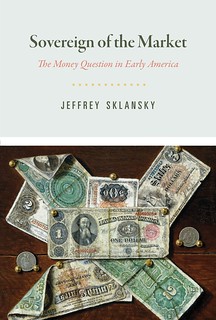 Sovereign of the Market
Sovereign of the Market
The Money Question in Early America
Jeffrey Sklansky
What should serve as money, who should control its creation and circulation, and according to what rules? For more than two hundred years, the money question
shaped American social thought, becoming a central subject of political debate and class conflict. Sovereign of the Market reveals how and why this happened.
Jeffrey Sklansky's wide-ranging study comprises three chronological parts devoted to major episodes in the career of the money question. First, the fight over the innovation of paper money in colonial New England. Second, the battle over the development of commercial banking in the new United States. And third, the struggle over the national banking system and the international gold standard in the late nineteenth century. Each section explores a broader problem of power that framed each conflict in successive phases of capitalist development: circulation, representation, and association. The three parts also encompass intellectual biographies of opposing reformers for each period, shedding new light on the connections between economic thought and other aspects of early American culture. The result is a fascinating, insightful, and deeply considered contribution to the history of capitalism.
336 pages
12 halftones
6 x 9
CLOTH
$48.00
ISBN: 9780226480336
Published November 2017
QUICK QUIZ: Can anyone identify the image on the book's cover? -Editor
For more information, or to order, see:
Sovereign of the Market
The Money Question in Early America
(https://press.uchicago.edu/ucp/books/book/chicago/S/bo26773932.html)
NEW BOOK: MILITARY PAYMENT CERTIFICATES, 5TH ED.
A new edition of The Comprehensive Catalog of Military Payment Certificates has been published. Here's the announcement. -Editor
Comprehensive Catalog of Military Payment Certificates
Fifth Edition released at MPC Fest
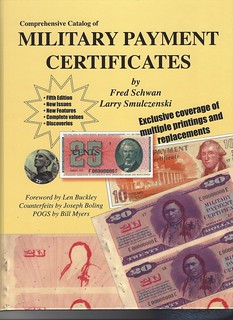 The fifth edition of The Comprehensive Catalog of Military Payment Certificates is being released within a few days of the fiftieth anniversary of the withdrawal of MPC from use in Vietnam on March 15, 1973. The military money was completely discontinued on November 19, 1973. This colorful money was first issued on September 16, 1946, and collectors immediately added examples to their collections. The first catalogs of MPC began appearing in the 1960s.
The fifth edition of The Comprehensive Catalog of Military Payment Certificates is being released within a few days of the fiftieth anniversary of the withdrawal of MPC from use in Vietnam on March 15, 1973. The military money was completely discontinued on November 19, 1973. This colorful money was first issued on September 16, 1946, and collectors immediately added examples to their collections. The first catalogs of MPC began appearing in the 1960s.
The overall reason for issuing MPC was to attempt to control the black market which flourished in Europe at the end of World War II. The introduction (September, 1946) of this new money for use by military personnel necessitated additional, often interesting to collectors, issues.
The new edition by Fred Schwan and Larry Smulczenski is very different from the early books and even other numismatic books today. This edition consists of 240 full-color pages of information, images, data and charts of interest to collectors.
In the tradition of the previous four editions, this book includes innovative new features. Two of these are POGs and counterfeits.
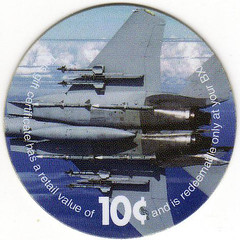 The Army and Air Force Exchange Service (AAFES) issued circulating gift certificates 2001-2018. Commonly and generally, they were called POGs. They were immediately popular with collectors. In an interesting twist, some of the POGs use images taken from MPC! This concept itself was used earlier when military payment certificates were designed borrowing elements from earlier federal paper money. The book includes a robust section on AAFES POGs contributed by Bill Myers.
The Army and Air Force Exchange Service (AAFES) issued circulating gift certificates 2001-2018. Commonly and generally, they were called POGs. They were immediately popular with collectors. In an interesting twist, some of the POGs use images taken from MPC! This concept itself was used earlier when military payment certificates were designed borrowing elements from earlier federal paper money. The book includes a robust section on AAFES POGs contributed by Bill Myers.
For the first time, the book includes an entire section on counterfeit MPC. Shortly after MPC was first issued in 1946, counterfeits also entered circulation. Of course, these counterfeits have been of interest to collectors since then, but little information has been available--until now. This interesting section is by Joseph Boling, the leading numismatic authority on paper money counterfeiting.
This book lives up to the comprehensive
title, covering in detail issues that are not even mentioned in other sources.
Military banking facilities were opened with checking services available to soldiers, sailors, airmen and Marines. The checks were payable in MPC! These same military personnel could buy gasoline (and other fuel) on a limited basis without paying local taxes. This system generated coupons which amounted to being currency. Usually called ration coupons these items are collected by a few intrepid collectors. You can see images of and learn about these amazingly complex issues in this new book.
Korean and Thai forces in Vietnam were paid in military payment certificates. As part of the controls instituted for this use, the Thai and Korean personnel were required to use coupons along with the MPC. These coupons were virtually unknown to collectors until the late 1970s. Here you will find the most complete listings of these rare items ever assembled much less published.
You probably are not surprised that an episode of M*A*S*H. centered on MPC, but you will be surprised to learn that the program was inspired by Edd Page, an MPC collector. You can see the M*A*S*H money here in a section devoted to stage, training and souvenir issues.
All of the above features are in addition to the meat of the book which is the detailed catalog of the thirteen issued and two unissued series of military payment certificates. Each series is exhaustively cataloged and illustrated. The previous edition of this book introduced the fact that most of the series were produced in multiple printings. These multiple printings make identifiable varieties, all of which are cataloged in detail. The authors include many interesting photographs of MPC in use. Many of these have never before been published.
Collectors love replacement notes! For more than fifty years, Schwan has sought and recorded MPC replacement data. Management of this survey has been taken over by collector--and computer geek--Doug Bell. Now more than 5000 replacements have been recorded. They are all listed here by serial number! Beyond that, quite amazingly, Schwan and Bell have calculated and reported the sheet number whence each replacement came! This is important information for serious replacement collectors.
Did you know that only one of the ninety regularly issued replacements is still not reported in any collection? It is the $5 of Series 651 (used until November 1973). Additionally, several primings of replacements have not been found or recorded! You can (should!) consider this book a treasure hunters' guide for replacements (and other issues, too).
Specimens of MPC are popular with collectors as you can imagine, and they are also important for research. But have you ever even seen one? If you do not have the auction catalog selling the Paymaster Collection, you probably have not. Here in this new book you can see--and read about--many specimens from that collection and others.
Serious MPC errors are rare, but a few extreme examples are not only known, but also legendary among collectors. Of course these errors are discussed and illustrated in this new book, as are less extreme errors.
Len Buckley is the legendary designer of Series 692. At the time that he designed this beautiful series, he was a new employee at the Bureau of Engraving and Printing. The $20 denomination of this series is featured on the cover of this new book. Buckley provides an informative foreword.
Earlier editions of this remarkable book received awards, including recognition by the Numismatic Literary Guild as Book of the Year.
With the introduction of this landmark new work, the publisher is launching a new Internet site to be used in conjunction with the book, the MPC community, and the free newsletter MPCGram (see MPCFest.com). This site, militarypaymentcertificates.us, will be used to update and archive MPC information.
This new book will be available at MPCFest 24 on March 17 or from Schwan and BNRPress on or after March 20 for $75 (postpaid until April 1, 2023). This, book will also be available as an ebook ($45). Email Schwan at fredschwan@yahoo.com for fastest shipping or snail mail the publisher at 132 E. Second St, Port Clinton, OH 43452.
NEW BOOK: U.S. MINT COIN BAG GUIDE
E-Sylum Feature Writer Pete Smith has written a new book on U.S. Mint coin bags. Here's an excerpt. -Editor
 The February 12, 2023, issue of The E-Sylum, published by Wayne Homren, included an article
on
The February 12, 2023, issue of The E-Sylum, published by Wayne Homren, included an article
on COLLECTING AND CATALOGING U.S. MINT BAGS.
In his comments following the article,
Wayne wrote, This is the fun and challenge of collecting numismatic ephemera. These artifacts
served a purpose in their time, and most were later discarded after their useful life. The few
that remain are interesting souvenirs and collectibles. Who will be the David Lange of mint
bags? It would be interesting to catalog these and learn more about what exists.
I agreed that it would be interesting to catalog these and learn more about what exists. And so I
began. I wrote AN ESSAY ON COIN BAGS
that was published the following week on February
19. Again, editor Homren had comments. As I noted last week, coin bags are interesting
souvenirs and collectibles, and a project to photograph and catalog them would be welcome.
Wayne had just told me that I needed to gather photographs so I began to harvest what I could find on the Internet. A week into the project I realized that my list of bags and file of pictures needed to be integrated into a book format.
I discovered that eBay had hundreds of listings for Mint bags but most of the photos were, in my opinion, not good enough to illustrate a book. A recent Heritage sale had about fifty excellent images I could use. In addition, I set my camera on a tripod and began to photograph items from my collection.
I knew I could not list and harvest photos of all Mint bags. My efforts would be incomplete and would only include what I had seen. My goal was to publish what I could and encourage others to report what they have to fill in the blanks.
In 2004 I worked for Minneapolis Gold and Silver in the dealer-to-dealer bullion trading business. The company bought 90% silver coins from various local sources. The coins came in used canvas bags and were repackaged in new canvas bags imprinted with the name of our major client. I was allowed to rummage through the used bags to form a modest collection. I was generally looking for Mint and Federal Reserve bags. I avoided blank bags, bank bags, coin dealer bags and lead shot bags.
I attempted to avoid duplication and occasionally upgraded condition. I never bought or sold a bag. I collected for the joy of collecting without any commercial influence.
To learn where to find a free online copy of the book, see the Newman Numismatic Portal article elsewhere in this issue. Please let us know if you have relevant material not already listed in the book. As its title acknowledges, every initial cataloging effort is by nature incomplete. One has to start somewhere, and once the initial effort is published and provides a baseline, the community can begin adding to that body of knowledge. -Editor
To read the earlier E-Sylum article, see:
COLLECTING AND CATALOGING U.S. MINT BAGS
(https://www.coinbooks.org/v26/esylum_v26n07a30.html)
AN ESSAY ON COIN BAGS
(https://www.coinbooks.org/v26/esylum_v26n08a14.html)
NEW BOOK: COINS OF THE FOURTH ABBASID PERIOD
SPINK has published a new book by Yahya Jafar on the coins of the Fourth Abbasid Period. It has been nominated for the IAPN book prize. -Editor
The coins of the Fourth Abbasid Period And some history (552-656h/1136-1258AD)
by Yahya Jafar
Regular price £100.00
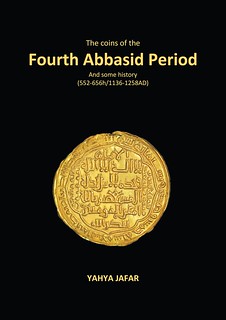 This book describes the coins with some history of the important fourth and last Abbasid period from the time of expulsion of the Seljuks from Baghdad in 552AH/1136AD to the end of the Abbasid era when the Mongols invaded and occupied Baghdad in 656AD/1258AD thereby ending the Abbasid dynasty.
This book describes the coins with some history of the important fourth and last Abbasid period from the time of expulsion of the Seljuks from Baghdad in 552AH/1136AD to the end of the Abbasid era when the Mongols invaded and occupied Baghdad in 656AD/1258AD thereby ending the Abbasid dynasty.
It is written in English and Arabic in order to maximise benefit with coloured coin photos presented in one and a half actual size which includes several unissued coin dates as well as new mints. Pertinent references in both Arabic and English are provided.
The book is in A4 size with hard cover using high quality paper throughout.
N.B. please note that this book has a shipping period of seven to ten working days.
To read the complete article, see:
For more information, or to order, see:
(https://spinkbooks.com/products/the-coins-of-the-fourth-abbasid-period-and-some-history-552-656h-1136-1258ad-by-yahya-jafar)
THE BOOK BAZARRE
Bowers Serieswas written by award-winning author Joshua McMorrow-Hernandez, who presents these silver coins to both collectors and investors. 384 pages. Order your copy online at Whitman.com , or call 1-800-546-2995.
NEW BOOK: COINS OF THE SIKH EMPIRE
SPINK has published a new book on the coins of the Sikh Empire. -Editor
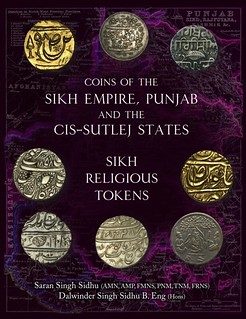 Coins of the Sikh Empire, Punjab and the Cis-Sutlej States: Sikh Religious Tokens
Coins of the Sikh Empire, Punjab and the Cis-Sutlej States: Sikh Religious Tokens
Hardback
£75
Colour Illustrations
566 pp
This book introduces the rich heritage of the Sikhs in Punjab through coins and tokens. From the very first known coins issued by Baba Banda Singh Bahadur in 1711, to the last Sikh Coins issued by Maharaja Duleep Singh in early 1849, one can follow the rise and fall of the Sikh Empire. Gold Mohurs, silver Rupees and copper Paisa are well documented, with numerous unlisted types and varities.
The coinage of the CIS-Sutlej States of Buria, Faridkot, Jind, Kaithal, Kalsia, Kapurthala, Maler Kotla, Nabha and Patiala is also included. Numerous unlisted dates and varieties, accompanied by photographs where available, are depicted to show the legends.
This catalogue is a useful and detailed reference for anyone wishing to explore a different aspect of history through numismatics.
For more information, or to order, see:
Coins of the Sikh Empire, Punjab and the Cis-Sutlej States: Sikh Religious Tokens
(https://spinkbooks.com/products/coins-of-the-sikh-empire-punjab-and-the-cis-sutlej-states-sikh-religious-tokens)
NEW BOOK: COINS OF THE ICENI
A new book by Chris Rudd catalogues the Celtic coins of Norfolk. Also nominated for the IAPN Book Prize. -Editor
COINS OF THE ICENI
New book from Chris Rudd - Published February 2022
‘Now coins of the Iceni are easier to identify, easier to understand'
- 400 enlarged photos, mainly of coins from the incomparable collection of Dr John Talbot in the Ashmolean Museum, Oxford
- 60 colour illustrations and maps
- two-way ABC-COI concordances
- index of Icenian coins by type names
- A5, 96pp, paperback, £20 post free
- 978-0-9566889-5-8
Coins of the Iceni is a radical new catalogue of the Druid-designed coins of Queen Boudica's rebellious, theocratic, corpse-cremating, torc-hoarding, horse-revering, romanitas-resisting, oak-groving, Ica named, holy-island tribe. It is the most convenient, most comprehensive catalogue of the Celtic coins of Norfolk c.55 BC-AD 47. It makes them simpler to identify, simpler to classify. It names, describes, illustrates, dates and ‘rarefies' 250 Icenian coin types, sub-types and variants; more than twice as many as in Ancient British Coins. It also links them to the Druids and to 3,000 years of Norfolk's sacred prehistory. Coins of the Iceni has 96 pages, 400 enlarged photos, mainly of coins from the incomparable collection of Dr John Talbot in the Ashmolean Museum. Oxford, 60 colour illustrations and maps, two way ABC-COI concordances, index of Icenian coins by type names.
For more information, or to order, see:
Coins of the Iceni – Chris Rudd
(https://www.greenlightpublishing.com/PBSCProduct.asp?ItmID=37159430)
Coins of the Iceni
(https://celticcoins.com/shop/books/coins-of-the-iceni/#:~:text=Coins%20of%20the%20Iceni%20is,Celtic%20coins%20of%20Norfolk%20c.)
NEW BOOK: MONNAIES ROYALES FRANÇAISES
Here's a Google-translated description of a new book by S. Sombart on the French Royal coinage from Louis XI to Henri IV. -Editor
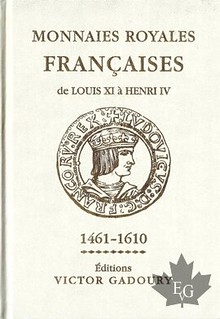 Monnaies Royales de Louis XI à Henri IV
Monnaies Royales de Louis XI à Henri IV
Author: S. Sombart
Publisher: Editions V. Gadoury
Year: 2022
€ 39.00
For this new work, the traditional method of classification of the Gadoury editions is respected: the coins are classified by reigns, chronologically then, within each reign, they are classified from the denomination of the smallest value to the greatest value, according to the prices of the time. The logical order of metals is respected with copper (from Henry III), billon, silver and gold.
The types are illustrated at their real size with, each time, the technical characteristics: metal and fineness in thousandths / the official weight / the diameter The rarity index is indicated in the type, from current "C" to "R5" , passing through R (= R1), R2, R3, R4. Generally, an R5 rarity index indicates a coin seen at 1 or 2 copies, R4 for 3 to 5 copies, etc.up to C for a common currency.
Only coins are quoted whose existence we have confirmed and have seen at least one example for sale. The dash "-" indicates an absence of quotation, for lack of sufficient elements to do so: number of R5 coins are for example known only in one copy.
For more information, or to order, see:
Monnaies Royales de Louis XI à Henri IV
(https://www.gadoury.com/it/libri/monnaies-royales-de-louis-xi-a-henri-iv)
NEW BOOK: THE PALESTINE CURRENCY BOARD
Howard Berlin has published a new book on the history and finances of the Palestine Currency Board. -Editor
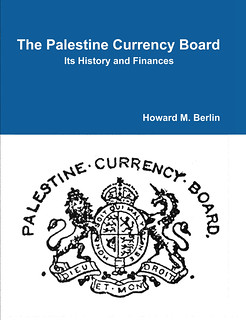 The Palestine Currency Board: Its History and Finances
The Palestine Currency Board: Its History and Finances
by Howard M. Berlin (aka The Numismatourist™)
Format: 8.5 x 11 (216 x 297 mm), full color, paperback and hardcover 291 pages, 72 tables, 52 pictures, 453 footnotes.
Paperback Edition
ISBN: 978-1-329-86836-6
Price: $40.95
Hardcover Edition
ISBN: 978-1-312-80877-5
Price: $57.95
Listed prices do not include shipping charges, if applicable.
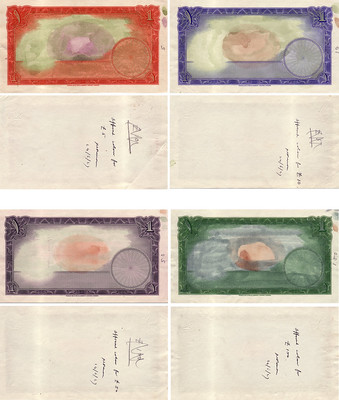 The British established the Mauritius Currency Board as the first currency board in 1849
and there have been more than 70 such currency boards since. The concept of the function of a
currency board is not well known, as it is often thought of as a nation's central bank. A currency
board is an institution that issues currency notes which are convertible on demand at a fixed rate
into an anchor currency backed by underlying securities. In effect, the newly issued currency is
essentially a copy or clone of the anchor currency.
The British established the Mauritius Currency Board as the first currency board in 1849
and there have been more than 70 such currency boards since. The concept of the function of a
currency board is not well known, as it is often thought of as a nation's central bank. A currency
board is an institution that issues currency notes which are convertible on demand at a fixed rate
into an anchor currency backed by underlying securities. In effect, the newly issued currency is
essentially a copy or clone of the anchor currency.
When the British defeated the Ottoman Turks and the armistice signed on October 31, 1918, Palestine, as part of the defeated Ottoman Empire, was administratively governed by the British, first as a military occupation, and then as a civilian Mandate granted them as a Trust by the League of Nations. Prior to 1927, Palestine had no currency that was solely its own, but rather the coins and banknotes of many other countries were used. The currencies were mostly those of Turkey, Egypt, France, Great Britain, India, Germany, Russia, Austria, and the United States.
This book traces the need and development for a native Palestine currency, culminating with the formation of the Palestine Currency Board which administered the Palestine Mandate's new monetary system. Unlike Britain's imperial pound-shilling-pence monetary system, the newly created Palestine pound was a decimal system divided into 1,000 mils and used the British pound sterling as its anchor currency. Established June 15, 1926, the Palestine Currency Board remained in effect for 26 years until it was dissolved on March 31, 1952, nearly four years after the State of Israel was established on May 14, 1948.
The Foreword is written by Prof, Steve H. Hanke of The Johns Hopkins University, who is a world-wide authority on monetary systems and the creation of currency boards.
- List of Tables
- Acknowledgements
- Foreword
- Preface
- Chapter 1. The Currency Board
- Chapter 2. Governance of Palestine by the British Military Following World War I and the Establishment of the Palestine Mandate
- Chapter 3. The First Proposals for a New Currency
- Chapter 4. Palestine Currency Board Operations and Finances for the First Five-Year Period, 1926-1930
- Chapter 5. Palestine Currency Board Operations and Finances for the Five-Year Period, 1931-1935
- Chapter 6. Palestine Currency Board Operations and Finances for the Five-Year Period, 1936-1940
- Chapter 7. Palestine Currency Board Operations and Finances for the Five-Year Period, 1941-1945
- Chapter 8. Palestine Currency Board Operations and Finances for the Final Years, 1946- 1952
- Chapter 9. Proposed Currency Note Design Changes
- Chapter 10. Redemption of Currency Notes Before and After Demonetization
To Order:
Copies may be ordered through the publisher, Lulu Press:
The Palestine Currency Board: Its History and Finances (Hardcover)
(https://www.lulu.com/shop/howard-m-berlin/the-palestine-currency-board-its-history-and-finances/hardcover/product-82vqev.html)
The Palestine Currency Board: Its History and Finances (Paperback)
(https://www.lulu.com/shop/howard-m-berlin/the-palestine-currency-board-its-history-and-finances/paperback/product-e9nv4m.html)
NEW BOOK: TOKENS OF LOVE, LOSS AND DISRESPECT
A new IAPN-nominated book edited by Sarah Lloyd examines the history of defaced coins and tokens. -Editor
Tokens of Love, Loss and Disrespect 1700-1850
 Publication date: January 2023
Publication date: January 2023
Publisher : Paul Holberton Publishing
Editor : Sarah Lloyd
Language: English
Illustration : 250
Format Available : Paperback
ISBN : 9781911300946
Dimensions : 240 X 170 mm
Price : £45.00
Coins from the 18th and early 19th centuries are physically and visually intriguing. In addition to their monetary uses, they were repurposed to communicate private and public messages - from ad hoc scratchings and punch marks to full-scale re-engraving of surfaces. This book aims to give 21st-century readers insight into that experience and to the many unofficial purposes these objects served.
Drawing on the largest extant collection of defaced coins and tokens, this publication brings together for the first time the full-range of expertise required to understand the phenomenon, with contributions from 11 scholars and collectors. It focuses on a signi?cant period in British history, when modi?cation expressed political commentary, commercial activity, familial and emotional commitment, personal identity and life history. It will examine the coins and tokens themselves and look at who modi?ed them, where, why and how. The circumstances of the coins' subsequent survival is explained, and each aspect will be set in its specific historical contexts.
Defaced coins and tokens are often enigmatic objects, and this book will offer a means of decoding and assessing them, while also drawing attention to their value as a distinctive source of historical evidence. The contributors will also consider what these surviving coins reveal about the society in which they were produced and the light they shed on major historical developments of the period. Tim Hitchcock, for example, discusses the new prison culture that emerged following the outbreak of the American Revolution in 1776, evidenced in a growing number of convict tokens made in Newgate. Hamish Maxwell Stewart examines love tokens illustrated with the
'Sailor's Farewell' within the context of the market for sailor's gifts and tattoos to ward against the dangers of oceanic travel. Steve Poole looks at tokens as souvenirs of public hangings, not only in terms of the influence they exerted on contemporary public opinion but as exemplars of the wider material culture of public punishment. And Sally Holloway examines the design and iconography of love tokens exchanged as romantic gifts. As well as 12 essays, there is an annotated catalogue of 100 coins, selected for their individual interest or representativeness of a distinctive type of modi?cation or motif.
For more information, or to order, see:
Tokens of Love, Loss and Disrespect 1700-1850
(https://www.casematepublishing.co.uk/tokens-of-love-loss-and-disrespect-1700-1850.html)
NEW BOOK: MEDALS AND ARTISTS
Here's a Google-translated description of a new IAPN-nominated book on the medals of Swedish artists Carl Eldh, Eric Grate, Bror Hjorth, Carl Milles and Bruno Liljefors. -Editor
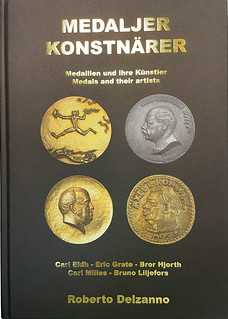 Medaljer konstnärer (Medals and artists)
Medaljer konstnärer (Medals and artists)
- A different book
- 414 pages
- Color
- A4 - Hardcover
- Nominated for best numismatic book in the world by IAPN!
- SEK 650
The book describes Carl Eldh, Eric Grate, Bror Hjorth, Carl Milles and Bruno Liljefors' entire medal issue, their medal art and the circumstances surrounding the actual issue and use of the medals. For the first time ever, a coherent picture of these artists is given. Each artist's medal production has been systematically documented, where the National Archives and the Royal Library with its newspaper archive have added significant and, for our time, partly previously completely unknown knowledge. Many previous question marks and uncertainties are now finally investigated and clarified. Biographies, contemporary descriptions, delicious illustrations and lots of enlargements and detailed pictures fill the book from cover to cover. The book is of course trilingual (Swedish, German, English), fully in color, A4, 421 pages.
For more information, or to order, see:
Medaljer och konstnärer - En annorlunda bok
(https://delzanno.se/litteratur/medaljer-och-konstnarer-en-annorlunda-bok)
IAPN 2023 BOOK PRIZE NOMINATIONS
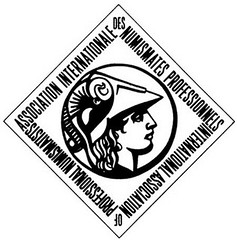
The International Association of Professional Numismatists (IAPN) awards an annual book prize. Organizer Peter Preston-Morley kindly forwarded the list of this year's nominees. There are 22 nominations this year. The Prize will be decided at the IAPN General Assembly in Marseille, France, on 4 June 2023. -Editor
AAMLID, Jan Olav. Siam Specimen Banknotes: First Series
House of Coins, Pattaya, Thailand, 2022
ISBN 978-6-165889-36-0
Price GBP 55. Order from www.spinkbooks.com
ALEXANDER, David. A Napoleonic Medal Primer.
Amazon Books, Middleton, USA, 2022
ISBN 979-8-35909-92-6-4
Price US $50. Order from www.amazon.com
To read the earlier E-Sylum articles, see:
NEW BOOK: SIAM SPECIMEN BANKNOTES
(https://www.coinbooks.org/v25/esylum_v25n22a06.html)
NEW BOOK: A NAPOLEONIC MEDAL PRIMER
(https://www.coinbooks.org/v25/esylum_v25n52a04.html)
ASHER, Israel. Guide Book – Coins, Banknotes and Tokens of Israel 2022/23
Isranumis, Qiryat Ono, Israel, 2022
No ISBN
Price €25. Order from www.isranumis.com
ATTWOOD, Philip. Mary Gillick, sculptor and medallist
The British Museum/Spink, London, 2022
ISBN 978-1-912667-75-8
Price: GBP 25. Order from www.spinkbooks.com
To read the earlier E-Sylum articles, see:
NEW BOOK: COINS, BANKNOTES, TOKENS OF ISRAEL
(https://www.coinbooks.org/v25/esylum_v25n18a04.html)
NEW BOOK: MARY GILLICK
(https://www.coinbooks.org/v25/esylum_v25n24a02.html)
CHAPONNIÈRE, Olivier. Monnaies d'or de la Suisse 1851-2022
Chaponnière & Firmenich SA, Geneva, 2022
ISBN 978-2-940574-07-0 (French text); 978-2-940574-08-7 (English text);
978-2-940574-9-4 (German text)
Price: CHF 25. Order from www.cfnumis.com
COSTANZO, Carmine. Le Monete coniate a Civitavecchia sul finire del secolo
XVIII
Tipografia Ceccarelli, Campo Morino, Italy, second printing, 2022
ISBN 978-8-896434-77-2
Price: €38. Order from www.gadoury.com
To read the earlier E-Sylum articles, see:
NEW BOOK: GOLD COINS OF SWITZERLAND 1851-2022
(https://www.coinbooks.org/v26/esylum_v26n09a03.html)
DELZANNO, Roberto. Medaljer Konstnärer
Roberto Delzanno, Stockholm, 2022
ISBN 978-91-639-9470-8
Price: €60. Order from www.delzanno.se
DRAGICEVIC, Dusty. Croatian Banknotes. A Standard Reference
Velered Publishing, Balcatta, Australia, 2022
ISBN 978-0-646-85955-2
Price: 60 AUD/€40/US $40. Order from www.velered.com
To read the earlier E-Sylum article, see:
NEW BOOK: CROATIAN BANKNOTES
(https://www.coinbooks.org/v25/esylum_v25n23a06.html)
GANGANELLI, Roberto. Numint [2 volumes]
Libra Media & Services, San Giustino, Italy
No ISBN
Price: €60. Order from www.cronacanumismatica.com
JAFAR, Yahya. The Coins of the Fourth Abbasid Period
Yahya Jafar, Abu Dhabi, 2022
ISBN 978-9948-04-423-9
Price: GBP 100. Order from www.spinkbooks.com
JONES, Peter. Treasure!
Bookbaby [US online self-publisher], 2022
ISBN 978-1-6678-36225
Price: US $99. Order from www.target.com
KULKARNI, Prashant. Archaic Coinage of Godavari Valley and the Deccan
Eternal Arts and Coins LLP, Nagpur, India, 2022
ISBN 978-93-5526-685-9
Price GBP 60. Order from www.spinkbooks.com
To read the earlier E-Sylum articles, see:
NEW BOOK: TREASURE!
(https://www.coinbooks.org/v25/esylum_v25n13a05.html)
NEW BOOK: ARCHAIC COINAGE OF GODAVARI VALLEY
(https://www.coinbooks.org/v25/esylum_v25n42a09.html)
LLOYD, Sarah, and MILLETT, Timothy. Tokens of Love, Loss and Disrespect
1700-1850
Paul Holberton Publishing, London, 2022
ISBN 978-1911-300-94-6
Price GBP 45. Order from www.casematepublishers.co.uk
LOVMO, Mark. South Korean Coins in the Era of Development
iAsure Group, New York, 2022
ISBN 978-0-9905200-5-4
Price: US $50. Order from www.spbbooks.com
To read the earlier E-Sylum article, see:
NEW BOOK: SOUTH KOREAN COINS
(https://www.coinbooks.org/v25/esylum_v25n19a03.html)
McDOWELL, Christopher. The Early Betts Medal Companion
American Numismatic Society, New York, 2022
ISBN 978-0-89722-389-8
Price: US $125. Order from www.numismatics.org
PARKINSON, Robert. Ecoinomics
Spink, London, 2022
ISBN 978-1-912667-78-9
Price: GBP 20. Order from www.spinkbooks.com
To read the earlier E-Sylum articles, see:
NEW BOOK: THE EARLY BETTS MEDAL COMPANION
(https://www.coinbooks.org/v25/esylum_v25n48a04.html)
NEW BOOK: ECOINOMICS
(https://www.coinbooks.org/v25/esylum_v25n14a04.html)
PELLETIER, Serge. Numismatics for Everyone: La Numismatique pour tous
Lighthouse Publications (Canada), Quebec, Canada, 2022
ISBN 978-2-9821129-0-2
Price: CAN $86.95. Order from www.lighthousecanada.ca
ROY, Alan. Medals & Exonumia of the Royal Canadian Mint
Alan Roy, Hamilton, Ontario, Canada, 2022
No ISBN
Price: CAN $12.95. Order from alroy477@gmail.com
To read the earlier E-Sylum articles, see:
BOOK REVIEW: NUMISMATICS FOR EVERYONE
(https://www.coinbooks.org/v25/esylum_v25n43a06.html)
NEW BOOK: MEDALS OF THE ROYAL CANADIAN MINT
(https://www.coinbooks.org/v25/esylum_v25n26a02.html)
RUDD, Chris and COTTAM, Elizabeth. Coins of the Iceni.
Chris Rudd, Norwich, England, 2022
ISBN 978-0-9566889-5-8
Price: GBP 20. Order from www.greenlightpublishing.co.uk
SINGH SIDU, Saran and Dalwinder. Coins of the Sikh Empire, Punjab and
the CIS-Sutlej States
Spink, London, 2022
ISBN 978-1-912667-80-2
Price: GBP 75. Order from www.spinkbooks.com
SOMBART, Stéphan. Monnaies Royales Françaises de Louis XI à Henri IV
Éditions Victor Gadoury, Monaco, 2022
ISBN 978-2-906602-54-0
Price: €39. Order from www.gadoury.com
WANG, Helen, THIERRY, François and JANKOWSKI, Lyce. Chinese
Numismatics: The World of Chinese Money
Spink, London, 2022
ISBN 978-1-912667-88-8
Price GBP 30. Order from www.spinkbooks.com
WITHERS, Paul and Bente. Coin-Weights of Europe 2 and 3.
Galata, Llanfyllin, Wales, 2022
ISBN 978-1-908715-17-3; 978-1-908715-18-0
Price: GBP 80. Order from www.galata.co.uk
To read the earlier E-Sylum articles, see:
NEW BOOK: CHINESE NUMISMATICS
(https://www.coinbooks.org/v25/esylum_v25n27a03.html)
NEW BOOK: COIN-WEIGHTS OF EUROPE, VOLS 2-3
(https://www.coinbooks.org/v25/esylum_v25n10a04.html)
For more information on IAPN, see:
https://iapn-coins.org/
To read the earlier E-Sylum article, see:
IAPN BOOK PRIZES 2021, 2022
(https://www.coinbooks.org/v25/esylum_v25n23a07.html)
NEWMAN PORTAL ADDS U.S. MINT COIN BAG GUIDE
The latest addition to the Newman Numismatic Portal is a book on U.S. Mint coin bags by Pete Smith. NNP Project Coordinator Len Augsburger provided the following report. -Editor
Pete Smith Writes U.S. Mint Coin Bag Guide
 While most of us have seen a U.S. Mint coin bag here or there, no one has attempted a wider treatment of the subject, until now. Pete Smith's The Incomplete Guide to United States Mint Coin Bags (92 pp.) represents the first best attempt to restore order to the chaos of cloth banks utilized by the various Mints. Using online sources, as well as his own experience in the bullion trading business, Smith identifies the major categories of bags and creates a framework for collectors and future researchers.
While most of us have seen a U.S. Mint coin bag here or there, no one has attempted a wider treatment of the subject, until now. Pete Smith's The Incomplete Guide to United States Mint Coin Bags (92 pp.) represents the first best attempt to restore order to the chaos of cloth banks utilized by the various Mints. Using online sources, as well as his own experience in the bullion trading business, Smith identifies the major categories of bags and creates a framework for collectors and future researchers.
Bags surely existed in massive quantities but are infrequently seen today. Smith notes that 56,470 bags would have been required for the 1940-S cent coinage and by extension asks, where are they now?
Today, the most prized bags are those used to transport gold or Carson City coinage, and nearly all bags identified date to the 20th century.
Newman Portal has digitized a good amount of late 19th century Mint correspondence relating to coin bags. P. J. Kornder of Brooklyn complained to the Mint Director in 1891: I would like to call your attention to the enclosed bag which I got from the Mechanics Bank Brooklyn with $10 in Pennies, it is the poorest bag I ever saw and so small that they cannot be properly tied. I spilled them all over the street in carrying. I send you this merely to draw your attention to them, perhaps they are being furnished inferior to the required kind &c.
Newman Portal acknowledges Roger Burdette for creating metadata for this series.
Image: Carson City dollar bag connected to the 1971 Treasury release, ex. Heritage 7/15/2022, lot 4386, realized $4,680.
Link to The Incomplete Guide to United States Mint Coin Bags on Newman Portal:
https://nnp.wustl.edu/library/book/624852
Link to Mint bag correspondence, 1879-1895:
https://archive.org/details/newmannumismatic?query=bag&sort=&and%5b%5d=creator%3A%22u.s.+mint%22
SMITHSONIAN MARKS 100 YEARS OF U.S. MINT COLLECTION
This CDN Publishing article has a montage of images from a recent event at the Smithsonian celebrating the centennial of the incorporation of the U.S. Mint Coin Cabinet into the National Numismatic Collection. -Editor
The transfer of the Mint Coin Cabinet a century ago transformed the NNC into a national and world treasure and gave it an eclectic mix of coins, medals, and alternative currencies. These objects had served as reference material for U.S. Mint officials and engravers since the Cabinet was formally established in Philadelphia in 1838. In the decades that followed and with funds appropriated by Congress, the Cabinet grew to include patterns, proofs, and uncirculated coins and medals made by the U.S. Mint itself, as well as a wide range of private issues and international coins and medals from across the globe. By the time the collection was transferred to the Smithsonian in 1923, it numbered over 18,000 objects and included many rare and unique specimen.
A century later, the U.S. Mint continues to help grow the National Numismatic Collection, by providing annual transfers of the new coins and medals it produces. The Mint Cabinet remains the centerpiece of the National Numismatic Collection and an incomparable resource for the study of U.S. coinage and its many connections to the history of money worldwide.
For more information on the National Numismatic Collection, see:
The Collection
(https://americanhistory.si.edu/national-numismatic-collection/collection)
To join the Friends of the NNC to attend future events, see:
Friends of the National Numismatic Collection
(https://americanhistory.si.edu/giving/friends-of-numismatics)
To read the complete article, see:
Celebrating 100 Years of the United States Mint Collection at the Smithsonian
(https://www.greysheet.com/news/story/celebrating-100-years-of-the-united-states-mint-collection-at-the-smithsonian)
MORE ON CONFEDERATION-ERA COPPERS
Last week, we discussed a PCGS article redefining New Jersey, Vermont, Connecticut, and other confederation-era ‘coppers' as 'halfpennies'.
Colonial Coin Collectors Club (C4) President Chris McDowell wrote "one of the authors has already disavowed the work and requested his name be removed." When I drafted the E-Sylum piece I sent a copy to all of the listed authors and one of them (Jeff Rock) confirmed to me that he'd asked PCGS to remove his name. Later the lead author Craig Sholley shared email messages confirming that all listed authors had earlier been contacted. However, over a year had passed since then. Here are comments on the topic submitted by Jeff and others. -Editor
Jeff Rock writes:
"The PCGS article on renaming much of the undenominated coins made in colonial and early America as halfpence, ran with my name as one of the co-authors. I read over a draft of this article a year ago and made some minor suggestions, but did not do any actual writing on the piece, nor did I agree with its findings. Nothing was done with this article for a year, and I assumed the authors were reworking it, so it was a bit of a surprise to see it published. As I did not agree with the conclusions, I have asked that my name be removed as a co-author, though that has not yet been done.
My disagreements with this article are shared by many in the colonial field. In most of the legislation authorizing the state copper coinages, as well as in contemporary newspaper accounts, these coins were referred to as coppers - not halfpence. It seems that governmental authorities actually went to great pains to NOT call them halfpence, and to me that is striking. The authors conflate copper and halfpence and claim that this is the same as us doing the same with the word "nickel" to refer to a five-cent piece - which would be an accurate comparison if they showed that the legislation for the five-cent piece actually called them nickels, exclusively. This is not the case, and I think we need to give weight to what people at the time called these coins - which was "coppers."
The lack of a specific denomination would have allowed these to have a value that was not tied directly to the British and Irish halfpence that also circulated in colonial America (in both real and, more often, counterfeit form), and would allow the various states to change the rate their own copper coin was accepted at. The creation of the denomination "1/2P" on slabs was intended to refer to an American halfpence as opposed to the British and Irish halfpence (which are abbreviated "1/2d" - but there is obviously not room on the slab to make this distinction and will cause endless confusion. The authors originally proposed "A1/2P" as the denomination, which may have helped matters a bit, though it is still incorrect to assume that this wide variety of coinage types all circulated at the same value, this mythical American Halfpence.
While I doubt many colonial specialists will care if the "1/2P" designation is used on slabs, I also doubt that many of us will refer to the pieces in our collections by that made-up denomination. To us they will remain coppers."
Julia Casey writes:
"This article goes to great pains to prove that halfpence are coppers. To prove this, the authors quote primary sources such as Scottish and Canadian newspapers, British citizens, and even a claim made by Denmark. While these sources may prove that British halfpence are coppers, this was never in dispute. The great fallacy of this article is to declare that since all halfpence are coppers, then all coppers must be halfpence. State coppers are not halfpence.
"I also take issue with the word "coppers" relegated to "slang" like nickels. State coppers had a denomination. It was a variable denomination, which was always a fraction of a shilling. A "Connecticut copper" or a "Jersey copper" are the denominations of these coins. The "uneducated public" and the American everyman were fully aware of this."
Randy Clark writes:
"I recently read the latest press release from PCGS making a business decision to rebrand confederation-era
state coppers as American halfpennies,
in objection to the colloquial term coppers.
PCGS may
understand justifying this decision is awkward, as the organization is choosing not to use the international
halfpenny designation of 1/2d, but instead is proposing a new American halfpenny denomination of 1/2P.
Exchanging a reference term used for centuries (coppers) with a newly coined name (1/2P) in order to
provide a revised perception of denomination legitimacy is questionable.
"PCGS may be looking at the confederation era through modern eyes, trying to enforce numismatic denomination order for that period. In the 18 th century, prior to the confederation era, individual colonies printed specific denomination paper currency, but did not make domestic coins. Instead, each had to decide how to value a plethora of foreign circulating coinages, using an exchange rate from their local currency to the world's currencies (controlled by individual legislatures). The use of exchange rates continued through the confederation era and only ended with the US Constitution and a countrywide, decimal based currency system. Because these 18 th century colonies, later states, did not make domestic coinages – they found it difficult to assign crisp local denominations to whatever coins were being circulated.
"My area of focus is Connecticut coppers, so I will confine my comments to that state's coining efforts. From 1709 to 1780 Connecticut issued paper currency in denominations of Connecticut pounds, shilling and pence. Denominations varied by year of issue, but there were minor notes in Connecticut pence (d) up to major notes in Connecticut pounds (£). In the legislative acts of 1780, Connecticut defined their currency notes as payable in Spanish Milled Dollars, or coins equivalent, so it is clear they were aligning the state's currencies to Spanish silver, rather than anything British. One Spanish Milled dollar was worth 6s in Connecticut money of account.
"Connecticut's colonial and confederation era exchange rate with British money was 1 shilling and 4 pence
of Connecticut money per British shilling. Which means a British halfpenny (valued at 24/s in England)
circulating in Connecticut was valued at 18/s in Connecticut money. This clarifies why it was called a
copper
– because it was equivalent to 1 1/3 Connecticut halfpence. There were also large quantities of
counterfeit British halfpence and other coppers circulating at the time, many of which were quite
underweight. It is understood local merchants valued different coppers at different rates – there was a
fluidity to the valuation of coppers in the market if they deviated too far from the norm.
"In 1785, when Connecticut authorized its own coppers, their intent was not to add yet another
denomination to the crazy mix of coppers already in play. And since they had issued paper currency as
recently as 1780, they were not intending to release a new form of legal tender. The legislative proposal
was to tighten up the local spare change medium with more uniform and predictable Connecticut made
versions. They chose a copper
denomination targeting the value and weight of the British halfpenny
because that was the most widely seen form of copper in the market. They were not coining Connecticut
halfpennies; they were coining coppers in a form familiar with merchants and consumers. Bulk transactions
of coppers to merchants, documented by Connecticut mint and treasury records, were done by weight, not
by counting coins. The 1785 authorizing legislation also made it clear Connecticut coppers were not legal
tender in payment of any debt.
"In 1787, the devaluation of coppers (the so-called Coppers Panic
) in Connecticut and other states had
changed the relationship of coppers per Connecticut shilling from the initial 18/s to whatever the market
would situationally accept. It varied, by date and location, from 24/s, to 48/s, to the extreme of 72/s. Since
they were not Connecticut halfpence, the relationship between coppers and the local official currency was
decoupled and fluctuated. By 1789/1790 onwards, they were hardly accepted at all in commerce.
"The point is that Connecticut was not coining local currency halfpence and certainly was not making British
halfpence. Given their experience with paper currency issues, both minor and major, Connecticut's
Legislature and Treasury knew how to define denominations with specificity. They authorized coppers,
a
local denomination for spare change only, choosing a weight and value familiar to the market. The
valuation of Connecticut coppers varied upon circumstance and year, decoupling them as an official
financial denomination. Coppers were the financial grease that allowed transactions to be completed
gracefully, and the designation coppers
continues to be the proper technical term for future references.
PCGS is obviously free to make business decisions that most favor their needs, but the justification for
labeling coppers as American halfpennies is incomplete."
Did the New Jersey Colonial Copper Have a Denomination?
Dennis Wierzba writes:
"The law empowering Walter Mould, Thomas Goadsby and Albion Cox (6/1/1786) …to strike and coin in Copper, for this State, a Sum equal in Value to Ten Thousand Pounds at fifteen Coppers to the Shilling (3 million Coppers)" is found in Early Coins of America, Crosby, p.278. The value of the copper is 1/15 shilling or 0.8 pence. It is inconvenient to call 0.8 pence a denomination, but certainly not correct to call it a halfpenny. These NJ coppers were struck to replace underweight counterfeit British halfpence and other light weight coins with a trusted copper.
"As to weight, Crosby, p.278 states the Act That the Coppers so be coined shall be of pure Copper and of weight of six Pennyweight and six grains
(=150 grains). For comparison, the Massachusetts cent had an authorized weight from 146 to 165 grains. The Fugio cent was authorized at the Federal standard of 157.5 grains. By weight, the NJ copper, if it had a denomination, would be called, by some, a cent. This is incorrect as the NJ Assembly explicitly used the 15 coppers per shilling standard, not the Federal one.
"The unauthorized practice of overstriking underweight coppers with the NJ design caused the NJ Assembly to vote to no longer accept NJ coppers in payment as of 6/10/1790, ending its special tax payment status and premium value. In the copper panic that started in 1789, coppers as a type were valued at 48 to the shilling or worse.
"The conclusion is that the denomination of a NJ copper is 1/15 of a shilling, but the commercial value declined substantially once the State would not accept the coppers to pay taxes. This is a similar situation to the Higley coppers legend to value me as you please.
I stand with the colonial authors and experts of the past from Crosby to Spilman to continue to call it a NJ copper. Fabricating the non-contemporary designation American halfpenny
is a proposed solution to a problem that is non-existent to the colonial collecting community."
Mike Wierzba writes:
"Recently an article came out on behalf of PCGS written by a group of authors, who are highly
respected in numismatics, reclassifying many confederation-era State Coppers and other issues
as American Halfpence
as opposed to the contemporary and current designation of Coppers.
"In this case, however, I must disagree with the article published by my esteemed colleagues.
My area of expertise primarily focuses on NJ coppers, so I will stick to that series here. When
the contract for striking NJ coppers was written, as well as the legislation printed to authorize
NJ Coppers as legal tender in NJ, both documents clearly noted the title of the coins as
Coppers
and specifically avoided the word halfpenny or halfpence in their descriptions. It is
highly unlikely that would have been the verbiage used in the official contract authorizing the
striking of these coins if Coppers was a general slang
term for a halfpenny-sized coin.
Coppers was the official word chosen for good reason.
"Valuation of these coins was different and ever-changing in commerce. The purpose of these coins was to combat the halfpenny and its underweight status with regard to a value in NJ. Also, NJ coppers (unlike other state issues) were fully authorized to be used both for debts and state taxes. NJ coppers were made in a quantity of 3,000,000 pieces, valued at 15 to the Shilling. Quick math shows this to break down to 80% of a Pence (using the British standard of 24 Halfpence to the Shilling).
"The authors of the article have suggested a new denomination for these coins, American
Halfpence
, and suggested a label of 1/2P instead of the commonly known 1/2d associated with
halfpence. This is a newly proposed denomination that was not a term used contemporarily,
nor historically, until this article. Also worth noting is that halfpenny and halfpence have
specific meanings, though that definition is not carried over in this proposed usage of the word.
"Generally speaking, a denomination of a coin gives an exact value that is authorized by a country/government. Since all the state coppers and other circulating privately issued coppers of the era were valued differently in each state, calling all these coins by the same denomination is not a correct fit. Not in the 1780s nor today.
"I am sure there will be more research and opinions coming forth on this topic. It is my opinion at the time of this writing however, that Coppers was the term given to these coins by both the state governments and by the American accounts of the time, most certainly to distinguish them from the British and Irish halfpennies already in circulation and keep their values in commerce as changeable as needed with day-to-day business. I am of the opinion that printed material such as articles, auction catalogs, and books current and in the future continue with the proper term for these coins, as they were described and named by state governments during the period, Coppers."
Coppers vs. Halfpennies
Ray Williams writes:
"I read the announcement by PCGS about the campaign to describe some of the
confederation-era copper coins properly
as halfpennies instead of coppers
.
This move seems to have been inspired by an article posted in the March 19 E-Sylum. It was written by six listed authors, several whom are friends and I have
great respect for their knowledge and opinions. I hope that a discussion between
the authors and C4 authors can debate the issue at some point.
But as friends often do, I must disagree with the article that was posted. Debate in the hobby usually results in good information being brought to light, or the parties agreeing to disagree. The following thoughts are my opinions on the subject.
I'm a collector of pre-federal coins, generally the state coppers of 1785-1788, and
specifically NJ Coppers. The original legislation authorizing the establishment of a
mint in NJ, and the people to run it, used the term coppers
. Not just once but
ten times including the title of the act. What sets the NJ Coppers apart from the
other confederation era coppers is that it was receivable in the payment of taxes.
Valued at 15 to the NJ Shilling initially, its value in commerce declined but not as
quickly as other coppers.
The values that the coins received in commerce depended upon the agreement of
buyer and seller, and diminished as it travelled further from its issuing state.
These coins were called coppers and were not halfpennies. Could someone at the
time have called them halfpennies
? Probably, BUT it would be like some today
calling the-cent a penny
. Our one-cent coin is not a penny, but tradition can
carry on.
If PCGS wants to call it a halfpenny, we'll know what they're talking about, even if
incorrect. A halfpenny is abbreviated as 1/2d
not 1/2P
. But I hope that
researchers, authors, catalogers, the Red Book, and the Colonial Encyclopedia
continue to call the coins what they really are – coppers. Colonial collectors are
sticklers for historic accuracy."
PCGS article lead author Craig Sholley offers this response. -Editor
With respect to Mr. McDowell's critique of our article on the state coppers, we wish to make the following points:
First, all authors listed on the byline were emailed several versions of the article while it was in development. The article always had coauthor names clearly listed on byline. Since there was some question on this point, we did provide an example email, with attached article copy, to both Mr. McDowell and the E-Sylum editor.
Coauthors were added to the byline as an acknowledgment of their participation in and contributions to the project. Those participations and contributions included proofreading and general recommendations, editorial changes, content changes, and providing base data or content. Any coauthor wishing to see email copies need only contact the two principal authors and editors, Craig Sholley or John Dannreuther.
As to the intent of the article, the sole intent was to use the historical records to establish the legal denomination (also known as face value or local valuation) for use on PCGS holder labels. Coins may or may not have colloquial and/or official names and official local valuations (denominations). Coin names may or may not be the same as the denomination.
Due to space constraints, PCGS does not use colloquial or official coin names on the holder labels. Rather they use the denomination, or more properly, a monetary abbreviation for the denomination. For example, U.S. gold ten dollar and half dollar coins, whose official names respectively are Eagle
and Half Dollar,
are respectively indicated as $10 and 50C on PCGS labels.
The presence of a denomination abbreviation on the PCGS holder label does not prevent collectors from calling coins by whatever name they wish. Coin names such as Capped Bust Half, Seated Quarter, Mercury Dime, etc. are all in common use and thus obviously not prevented
by the denomination abbreviation shown on the PCGS label. We have no objection to any collector calling a coin by whatever name they wish, and since PCGS has never, to our knowledge, expressed differently, we presume they corporately feel the same.
To the case at hand, the two principal authors use, and will continue to use, the term copper
or coppers
when referring to the coins in general and especially when including the Massachusetts cents and half cents in discussions of the state coppers.
It also should be noted that the denomination used for PCGS labels is the official valuation at the time and place of official authorization. Just as a Canadian dollar was and is not valued the same as a U.S. dollar, it should not be presumed that a half penny from Connecticut had the same value as a half penny from New Jersey or that either coin had the same value when spent in Pennsylvania or New York.
While denomination and local valuation at the time of authorization are the same, valuations in other places and/or at other times are locale and time specific. We thought our presentation of the valuation laws and the way in which various monies are, and always have been, treated around the world made that point clear. Since we were in error in not being more specific, this is intended as the clarification.
We hope that the foregoing clarifies the issues. Those with questions may certainly contact us.
Roger Siboni submitted this summary after digesting both arguments. -Editor
I have discussed this subject with contributors on both sides of the issue. This whole exercise
appears to me to simply be about slab enthusiasts
trying to standardize yet another category of
coinage into a simple basic unit so it can be more easily consumable
to a broader audience of
collectors. As a long time colonial copper collector and co-publisher of one of the main
textbooks in the New Jersey Copper series, I appreciate the idea and value of making often
misunderstood colonials more exciting and collectable to a larger audience of collectors.
The disadvantage of what some might call this noble effort is that it simply distorts reality to a breaking point. Several knowledgeable and published authorities in the field of colonial coppers have already weighed in on the mountains of historical, published and contemporary facts that make New Jersey, Connecticut, and Vermont coppers...coppers. Deliberately not half pennies.
An important factor greatly missed by this new halfpenny standard designation is that colonial collectors collect the vast array of colonial coppers for their diversity and distinct history. This includes differing exchange rates. The historic protection against counterfeit British halfpennies. The feeding of cash starved Colonies with anything round and brown. Differing political statements. This list goes on.
We revel in the difference between 9 Diniers, Nova Constellatio coppers, a Higley Value Me as
You Please
, and a New Jersey Copper. Each with a story, reason and purpose that bore little
relationship to British halfpennies other than they were both money.
The halfpenny designation also seems to fly right in the face of the fact that New Jersey Coppers come struck over just about everything from a Connecticut Copper, to a Virginia 1/2 Penny to a Clinton Cent. This is because they all traded at different values. (New Jersey Coppers were accepted for tax payment so they held value much better than other coppers and were ALWAYS the overstrike). In fact, many people collect New Jersey coppers solely by undertype!
So here we are, the choices are: accept a wholly fabricated standardization for colonial coppers to gain a broader audience (I am a bit suspect of this). Or resist, accept facts and history and maintain the integrity of why we collect early coppers.
I suppose, I come down on the side of not seeing much value in adding 1/2P to these coins. If there is not enough slab space real estate for the word copper, let's not default to 1/2P.
Always reject the incorrect periodic use of Cents, Pennies or half pennies when they arise in the context of Colonial coppers. And perhaps let us enjoy the fascinating complexity of these early coppers when trading in them was the wild west. Indeed, one can view Machin's Mills as not much more than an arbitrage shop. Making coins on the cheap they thought people might accept for more value. Overstriking every kind of unwanted copper with a more desirable copper on top (usually New Jerseys).
I prefer collecting REAL history in your hands
."
And taking one last swing from the other side... -Editor
Bill Eckberg writes:
"Others who know much more than I about pre-federal copper coinage have disagreed with the decision by PCGS to call the coins halfpence. Fair enough, and I say this as one who was included as a co-author on the article PCGS published. I'm a proud member of C4 because I find these coins fascinating, but I can't claim to be an expert on them.
"What surprises me is that what PCGS calls the coins seems to matter so much to a number of specialists in the field. My main specialization has been early Federal copper coins. PCGS' grading standards for half and large cents (if they can be called standards at all) do not in any way correspond to the standards that specialists in those coins have used for many decades. When we wrote the Grading Guide for Early American Copper Coins, of which I was an author, we acknowledged the different standards and suggested that collectors who were serious should learn both.
"That is similar to the way I feel about PCGS calling the pre-federal coppers halfpence. It might happen that collectors who are scared away from collecting pre-federal coinage by all of the arcana will find the new term a useful portal into the fascinating world of these historic and interesting coins."
Thanks, everyone! -Editor
To read the full PCGS article, see:
Confederation-Period Copper Coins: Halfpence, Cents, or Coppers?
(https://www.pcgs.com/news/confederation-period-copper-coins)
To read the earlier E-Sylum article, see:
PCGS REDEFINES CONFEDERATION-ERA COPPER COINS
(https://www.coinbooks.org/v26/esylum_v26n12a17.html)
NOTES FROM E-SYLUM READERS: MARCH 26, 2023
On That 1950 Overdated Mint Bag
Bern Nagengast writes:
"I took a better look at the so called 1950/1918 mint bag and those who responded that it is in fact a 1950 over 1948 are correct. Here's a close up clearly showing 1948, not 1918. That would make more sense. Not a good idea for me to look too quickly at coins or mint bags!"
It had me fooled at first, too. Our readers don't miss a thing. Thanks, everyone. -Editor
To read the earlier E-Sylum articles, see:
NOTES FROM E-SYLUM READERS: MARCH 12, 2023 : Overdated U.S. Mint Bags
(https://www.coinbooks.org/v26/esylum_v26n11a14.html)
MORE ON OVERPRINTED MINT BAGS
(https://www.coinbooks.org/v26/esylum_v26n12a14.html)
China Mint Long Beach Expo Pandas
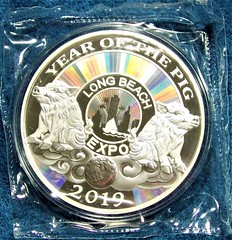 Phil Iversen writes:
Phil Iversen writes:
"In regard to the recent article about the China Mint Long Beach Expo Panda medals, they do sell for a premium over the spot silver price and a few are currently listed on eBay. The one I was able to purchase in 2019 while at the show has a really neat hologram effect as seen in the photo and they are still a popular collectible item."
Thanks. -Editor
To read the earlier E-Sylum article, see:
VIDEO: CHINA MINT LONG BEACH PANDA-MONIUM
(https://www.coinbooks.org/v26/esylum_v26n12a09.html)
Civil War Artifacts and Medals of Honor
Jim Haas writes:
"The link about Robert K Wittman was fascinating. It prompted me to take another look at my small collection of Civil War artifacts dug out of the ground thirty years ago. US Belt buckles and buttons, and a number of coins, an 1852 three cent piece, an 1853 Half Dime, an 1862 $ .02 coin and an 1857 Flying Eagle, all gifts.
 "The Medal of Honor piece also touched me in that when researching my first book, This Gunner at His Piece: College Point, New York & the Civil War, I learned that of the 226 men who served, four had been awarded the medal. Incredibly, it appears that the medal destined for soldier James C. Cornell was never sent or did not arrive. His name is not included among the acknowledged 1,195 recipients from the Civil War.
"The Medal of Honor piece also touched me in that when researching my first book, This Gunner at His Piece: College Point, New York & the Civil War, I learned that of the 226 men who served, four had been awarded the medal. Incredibly, it appears that the medal destined for soldier James C. Cornell was never sent or did not arrive. His name is not included among the acknowledged 1,195 recipients from the Civil War.
What came to light upon reviewing his Military Record at the National Archives was significant in that on February 21, 1865 he was recommended for the Medal by Major General John G. Parke, Commander of the 9th Army Corps for conspicuous gallantry, to wit: for his proficiency as gunner, he rendered great service at the Battle of the Wilderness, Spotsylvania, North Anna, Cold Harbor, and before Petersburg, June 17th. At the latter place he succeeded in exploding two of the enemy's caissons which brought fourth a huzza from the whole line and caused the enemy to withdraw from their position.
"Did he know he was recommended for the honor? There is no way to know; but that his valor in the face of the enemy was recognized by Major General Parke surely puts him in the ranks of Carl Ludwig, John Starkins and Joseph Hibson."
To read the earlier E-Sylum articles, see:
MEDAL OF HONOR MUSEUM TO EXPAND
(https://www.coinbooks.org/v26/esylum_v26n12a32.html)
LOOSE CHANGE: MARCH 19, 2023 : Recovering Stolen Relics
(https://www.coinbooks.org/v26/esylum_v26n12a33.html)
U.S. Mint Proof Set Packaging 1950-1951
Website visitor
Randy Phelps writes:
"I don't know if you can help me, but I would appreciate any information you might have. I have heard that the 1950 proof set was wrapped in one strip of tape, and that the 1951 proof set was wrapped with two strips of tape. Could you tell me for certain if this is true or not? Any contacts you might give me would also be of help."
Well, my library often comes in handy for queries like this. I have two books on the topic: United States Proof Sets and Mint Sets (1936-2002) by Bill Gale and Ron Guth published in 2002, and Dave Lange's A Guide Book of Modern United States Proof Coin Sets, published by Whitman in 2010. However, while the sections for those years do discuss packaging, there is no mention of strips of tape.
We all dearly miss the late Dave Lange. I was able to reach Ron Guth and find these images online. -Editor
Ron Guth writes:
"We never recorded the numbers of strips of tape used to seal the packages on the early U.S. Proof Sets. However, in looking at images of 1950 and 1951 Proof sets on the Internet, it appears that two tapes were used."
You can't prove a negative (so we're not 100% certain), but all the 1950 and 1951 box images I saw online also showed two pieces of paper tape at 90-degree angles forming a cross over the top of the box. Can anyone show us an example of one with just a single piece of tape? Thanks. -Editor
To read an earlier E-Sylum article, see:
BOOK REVIEW: MODERN UNITED STATES PROOF COIN SETS, SECOND EDITION
(https://www.coinbooks.org/esylum_v13n33a04.html)
FEUCHTWANGER THREE CENT PIECE ORIGINS
Researcher Roger Burdette submitted some interesting background information on the origin of Feuchtwanger's Three Cent Piece. Thank you! -Editor
Roger writes:
"I came across some interesting information regarding Feuchtwanger's Composition 3-cent tokens while researching other subjects in the Massachusetts Historical Society's John Quincy Adams Diary, volume 33: September 12, 1837. Ref. 12. IV:30. Tuesday.
"Adams had already served as President, and in 1837 was a member of the House of Representatives."
Feuchtwanger's 3-Cent Token Suggested by John Quincy Adams.
Here is the lot description from Heritage's 2023 May 22 Certified American Tokens & Medals US Coins Showcase Auction #60320,
1837 Feuchtwanger Three Cent, Mint State
Eagle on Rock, HT-263. Challenging Guide Book Variety.
1837 3C Feuchtwanger Three Cent -- Cleaned -- NGC Details. Unc. Low-118, HT-263, W-NY-480-65j RE, R.4
. German silver, reeded edge. The 1837 Feuchtwanger three cent featuring an eagle on a rock is a valuable Guide Book variety, listed on page 427 of the 2023 edition. Two dies pairs are known, though HT-265 and HT-265A are so rare as to be noncollectible. Most examples of HT-263 are circulated, but the present lot is an attractive Mint State example. Nicely struck and unblemished with ample straw-gold luster. Hints of gray color correspond with minor alloy imperfections. From The Nassau Collection.
Here is additional information I located that might be of interest to your readers.
John Quincy Adams recorded a meeting with Feuchtwanger on Sept 12, 1837 in his personal diary. This points to the 3-cent variety being produced sometime after September 12, and at the direct suggestion of Adams.
Dr. Feuchtwanger, brought me a Letter of introduction from Col. Abert.— He has a project for contracting to coin cents from a composition of zinc, copper and nickel, called German silver— He has coined counters with his name, and one cent stamped upon them, of which he shewed me several— They are clean, and about the size of a ten cent piece— He makes table furniture and all Articles usually plated of the same composition, costing about one fourth as much, and looking nearly as well as silver— He had a memorial which he wished me to present, but I advised him to make some alterations in it— And I suggested to him the expediency, of having a coinage of 2 and 3 cent pieces of his composition, instead of throwing the copper coinage of cents out of circulation.
[In the last sentence, Adams means that Feuchtwanger should propose his alloy for 2 or 3-cent coins and not for cents because that would keep the copper pieces in circulation. RWB]
Source: Massachusetts Historical Society. John Quincy Adams Diary, volume 33: September 12, 1837. Ref. 12. IV:30. Tuesday.
To read the complete lot description, see:
1837 3C Feuchtwanger Three Cent -- Cleaned -- NGC Details....
(https://coins.ha.com/itm/hard-times-tokens/tokens-and-medals/1837-3c-feuchtwanger-three-cent-cleaned-ngc-details-unc-low-118-ht-263-w-ny-480-65j-re-r4-pcgs-/p/60320-11081.s)
ROBERT COPSKEY MEDALS
Jim Haas passed along this information about some of the medals of Bob Copskey of the Maryland Institute College of Art. Thanks. -Editor
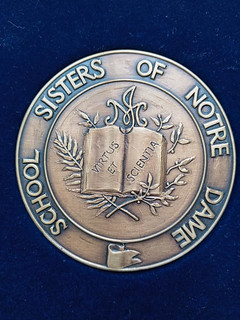 Bob Copskey has taught sculpture at the Maryland Institute College of Art for many years. Here is some information on his commissions and medallions.
Bob Copskey has taught sculpture at the Maryland Institute College of Art for many years. Here is some information on his commissions and medallions.
The School Sisters of Notre Dame commissioned him to make a 32" square bronze floor relief for the new Knott Science Building at the College of Notre Dame, Baltimore, MD in 2001. The School Sisters of Notre Dame also commissioned him to make a medallion using the same design. He sold them the rights to strike medallions in the future. Bedi-Makky in Brooklyn, NY cast the bronze floor relief, and the Jenkins Company in Baltimore struck the medallions.
The Maryland Province of the Society of Jesus commissioned him to make a 36" diameter bronze floor relief for The Basilica of the National Shrine of the Assumption of the Blessed Virgin Mary, Baltimore, MD in 2006, and a bronze commemorative medallion of the Jesuit seal, same design in 2007. Celebrating the 200th anniversary of the Baltimore Basilica. The New Arts Foundry in Baltimore cast this relief in bronze and the Medallic Art Company struck the medallions. All medallion striking rights were sold to The Maryland Province of the Society of Jesus.
He also had a private commission to model a medallion showing the Daly Twins. It was first cast in bronze at 18", then ten 3" medallions struck in 2002 by the Jenkins Company.
Here is some more information from the college website. -Editor
Robert A. Copskey Is A Nationally Acclaimed Figurative Sculptor & Educator.
Robert Copskey graduated from Kent State University, and the Rinehart School of Sculpture, Maryland Institute College of Art in Baltimore. He is nationally known for his work as a figurative sculptor and received the highest awards for excellence in figurative sculpture from the National Sculpture Society, winning the President's Prize and the John Gregory Memorial Prize. Copskey's sculpture Lynn
and the Pugilist
were selected for the National Sculpture Society's 58th Annual and Centennial Exhibitions. Several prominent commissions include the Baltimore Basilica, our nation's oldest basilica designed by Benjamin Latrobe and John Carroll; Teamsters Union Headquarters, Washington, D.C.; College of Notre Dame; and the Army Corp of Engineers.
His teaching experience parallels his professional career as a figurative sculptor, having taught at Montgomery College in Maryland and currently the Maryland Institute College of Art. He feels a debt of gratitude to carry on this noble art form of figurative sculpture training and to pass along the knowledge and skills of the great figurative sculptors. Copskey explains, My teaching experience has been a most rewarding dialogue between student and teacher. There is never a day lost when I am teaching.
To read the complete article, see:
ROBERT COPSKEY
(https://www.mica.edu/undergraduate-majors-minors/interdisciplinary-sculpture-major/robert-copskey/)
MOAF FORUM: THE INVENTION OF MODERN CURRENCY
The Museum of American Finance is sponsoring a free online forum on the topic of "American Puritans and the Invention of Modern Currency." -Editor
MoAF/Fordham Financial Issues Forum (VIRTUAL EVENT)
Dror Goldberg, in Conversation with Richard Sylla, on Easy Money: American Puritans and the Invention of Modern Currency
Thursday, April 27, 2023 | 12:00 PM to 1:00 PM
 Economists endlessly debate the nature of legal tender monetary systems—coins and bills issued by a government or other authority. Yet the origins of these currencies have received little attention. Dror Goldberg tells the story of modern money in North America through the Massachusetts colony during the 17th century. As the young settlement transitioned to self-governance and its economy grew, the need to formalize a smooth exchange emerged. Printing local money followed.
Economists endlessly debate the nature of legal tender monetary systems—coins and bills issued by a government or other authority. Yet the origins of these currencies have received little attention. Dror Goldberg tells the story of modern money in North America through the Massachusetts colony during the 17th century. As the young settlement transitioned to self-governance and its economy grew, the need to formalize a smooth exchange emerged. Printing local money followed.
Easy Money illustrates how colonists invented contemporary currency by shifting its foundation from intrinsically valuable goods—such as silver—to the taxation of the state. Goldberg traces how this structure grew into a worldwide system in which, monetarily, we are all Massachusetts. Weaving economics, law, and American history, Easy Money is a new touchstone in the story of monetary systems.
About the Speakers
Dror Goldberg is a senior faculty member in the Department of Management and Economics at the Open University of Israel. He holds a Ph.D in economics from the University of Rochester and a law degree from Tel Aviv University. Dror studies the theory, history and law of money, especially of legal tender currency. His work was published in the Journal of Economic History, Journal of Monetary Economics, Economic Theory and the Journal of Money, Credit, and Banking, among others. He is the author of Easy Money: American Puritans and the Invention of Modern Currency, published by the University of Chicago Press in March 2023. Dror worked at Texas A&M University and spent a sabbatical in the Department of Economics at NYU as a guest of Professor Richard Sylla.
Richard Sylla is professor emeritus of economics and the former Henry Kaufman Professor of the History of Financial Institutions and Markets at the NYU Stern School of Business. He is the author or co-author of several books, including Alexander Hamilton on Finance, Credit, and Debt; Alexander Hamilton: The Illustrated Biography; and Genealogy of American Finance. He was chairman of the Museum of American Finance from 2010-2020.
This event is FREE, but registration is required. Registered guests will receive the link prior to the program.
For more information, or to register, see:
Dror Goldberg, in Conversation with Richard Sylla, on Easy Money: American Puritans and the Invention of Modern Currency
(https://www.moaf.org/events/general/2023-04-27-dror-goldberg-in-conversation-with-richard-sylla-on-easy-money-american-puritans-and-the-invention-of-modern-currency)
To read an earlier E-Sylum article, see:
HOW COLONIAL MASSACHUSETTS CREATED MONEY
(https://www.coinbooks.org/v22/esylum_v22n11a29.html)
COAC 2023: 18TH & 19TH CENTURY DESIGN
The ANS 2023 Coinage of the Americas Conference theme is 18th & 19th Century Design and Production. Here's the call for papers. Please consider participating. -Editor
Coinage of the Americas Conference 2023: 18th & 19th Century Design and Production
Generously sponsored by the Resolute Americana Collection and the Stack Family
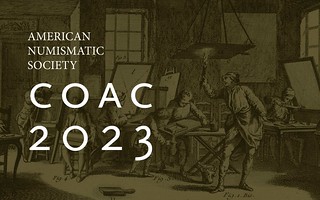 American Numismatic Society (ANS)
American Numismatic Society (ANS)
New York, New York
Conference: September 22–23, 2023
Submission Deadline: June 1, 2023
Email submissions and questions to Dr. Jesse Kraft, ANS Resolute Americana Assistant Curator of American Numismatics at jkraft@numismatics.org.
The American Numismatic Society (ANS) is proud to announce the 2023 Coinage of the Americas Conference (COAC). Since the mid-1980s, COACs are considered the leading venue for the presentation of academic research pertaining to numismatics of the Western Hemisphere. Papers presented at COACs have routinely been published, resulting in a number of edited volumes that have become standard reference texts on their respective topics.
For COAC 2023, the ANS seeks presentations and papers related to the design and production methods of numismatic objects. The eighteenth and nineteenth centuries saw the beginning and apex of the Industrial Revolution in the United States and abroad, and those methods drastically changed during this period. Perhaps nowhere is this more obvious than in numismatics, where nearly every method of design, die production, and striking was transformed. New machines were created for the sake of monetary creation, while old methods never seemed to fully fade away. This was not only true for the production of coins, tokens, and medals, but especially for paper currencies. Some of the most beautiful and iconic coins and paper currencies were made during this period, some inspired by millennia-old coins and others serving as inspirations for centuries to come. The artists and engravers who created those designs were recognized as masters of their craft in their own time, and are now hailed as luminaries by present-day numismatists. In addition to their artistic contributions, many of them also had a hand in the technological improvements for numismatic production during this period.
Topics for COAC 2023 can be large or minute in scale, specific or broad, but must be new and unpublished research. Potential topics include:
- The evolution of design and/or production on coins or paper currency
- Historical narratives of specific numismatic pieces that offers new insight into their design and production
- Biographies of specific engravers or companies that produced numismatic material
- A compare-and-contrast between the production methods of two or more works, time periods, or places
- How an 18th/19th century design was influenced by the past, or has influenced one from the modern era
Each presenter will have 50 minutes including time for Q&A. After the conference, each invited participant has until January 31, 2024 to submit their polished article for possible inclusion in an edited volume. Final papers should be no more than 8,000 words (not including tables, charts, image captions, or references).
To submit a proposal to COAC 2023, please provide the title of your topic, a 250-word abstract, and brief biography to Dr. Jesse Kraft at jkraft@numismatics.org by June 1, 2023. The selection committee will notify those who submitted successful proposals by June 15, 2023.
Great concept for a conference, and a super opportunity for ground-breaking research. Who's got a topic to contribute? -Editor
To read the complete article, see:
COAC 2023: Call for Papers
(https://numismatics.org/coac-2023-call-for-papers/)
ANA 2023 YOUNG NUMISMATIST LITERARY AWARDS
Coming up April first is the deadline for submissions to the ANA Young Numismatist Literary Awards. -Editor
Submissions Accepted for ANA Young Numismatist Literary Awards
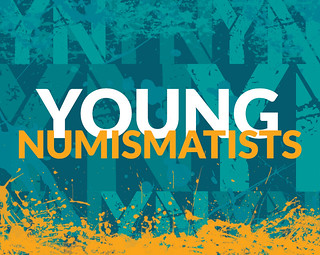 Submissions for the American Numismatic Association's (ANA) annual Young Numismatist Literary Awards competition are being accepted through April 1. The awards were established to encourage young writers in three age groups, all of whom will compete for cash awards and numismatic books.
Submissions for the American Numismatic Association's (ANA) annual Young Numismatist Literary Awards competition are being accepted through April 1. The awards were established to encourage young writers in three age groups, all of whom will compete for cash awards and numismatic books.
Article submissions will be evaluated by a panel of judges that includes Bill Fivaz, Mitch Sanders and Kenneth Bressett.
Eligibility
To compete in this year's competition, participants must be ANA members. Submitted articles will focus on a numismatic topic of the competitor's choice.
Bill Fivaz Young Numismatist Literary Award
Ages: 8-12
Article should display basic knowledge of a numismatic topic. Creativity and original conclusions are encouraged. Suggested length: 450-900 words.
Q. David Bowers Young Numismatist Literary Award
Ages: 13-17
Article should display advanced knowledge of a numismatic topic. Logically presented facts and original conclusions are encouraged. A bibliographic list of sources is recommended, but not required. Suggested length: 900-1,800 words.
Kenneth E. Bressett Young Numismatist Literary Award
Ages: 18-22
Article should display in-depth knowledge of a numismatic topic. Logically presented facts and original conclusions are required, as is a bibliographic list of sources. Inclusion of charts, graphs, tables or other illustrations is encouraged. Suggested length: 1,800-3,600 words.
Guidelines for Submissions
When submitting articles:
- Provide ANA-member number, category of submission and contact information (email, phone number and address) on the first page.
- Include author's name and award category in the file name.
- Submissions are accepted in Microsoft Word or PDF format only.
- Up to three submissions per author are allowed.
- Submissions previously published in The Numismatist will not be accepted.
Award Structure
The following prizes will be awarded in each of the age categories:
- First Place: Certificate and $500 cash prize, plus a $500 voucher to help build a personal library of numismatic books produced by Whitman Publishing. (International winners will be required to pay book shipping costs.)
- Second Place: Certificate, plus a $200 book voucher from Whitman Publishing.
- Third Place: Certificate, plus a $100 book voucher from Whitman Publishing.
Completed entries should be emailed to sstewart@money.org.
For additional information, please contact sstewart@money.org.
ANNA HYATT HUNTINGTON (1876-1973)
Archer M. Huntington was a major benefactor of the American Numismatic Society in New York, and served as its President from 1905 to 1910. E-Sylum Feature Writer and American Numismatic Biographies author Pete Smith submitted this additional background article illustrating Huntington's family and wealth. Thanks! Great history. -Editor
In past weeks we have discussed the mother and first wife of Archer Milton Huntington. He was left in a dark depression after his divorce from Helen. He was a tall man at six-foot-five-inches. During this time his weight grew to 350 pounds. His second wife brought him out of his depression.
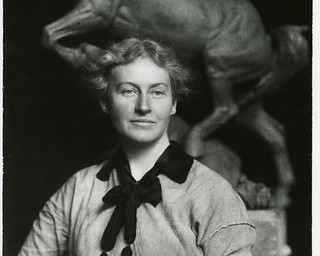 Anna Vaughn Hyatt was born in Cambridge, Massachusetts, on March 10. 1876. Her father was
Alpheus Hyatt Jr. (1838-1902), a professor of paleontology and zoology at MIT and Harvard.
Alpheus and an older sister sparked her early interest in animals and the study of animal
anatomy. Her mother, Audella Beebe (1840-1932), was a landscape painter.
Anna Vaughn Hyatt was born in Cambridge, Massachusetts, on March 10. 1876. Her father was
Alpheus Hyatt Jr. (1838-1902), a professor of paleontology and zoology at MIT and Harvard.
Alpheus and an older sister sparked her early interest in animals and the study of animal
anatomy. Her mother, Audella Beebe (1840-1932), was a landscape painter.
Anna studied animals in zoos and the circus. Her first art teacher was Henry Hudson Kitson who dropped her as a student after she identified anatomical flaws in his work. She studied at the Art Students League under Hermon Atkins MacNeil. Later she worked with Gutzon Borglum.
Anna moved from Boston to New York in 1902 to produce small bronze statuettes of animals noted for their lifelike appearance and active poses. Her work found a thriving market. It was reported that her 1912 earnings exceeded $50,000. This success allowed her to work and exhibit in Paris between 1906 and 1910. There he won acclaim for her 1910 equestrian sculpture of Joan of Arc.
Numismatist J. Sanford saltus contributed funds for a monumental sculpture to commemorate five hundred years since the birth of Joan of Arc. Anna Hyatt was commissioned to do the larger monument. It was dedicated on December 6, 1915, at Riverside Drive and 93rd Street in Manhattan. This was noted as the first sculpture of a real woman in New York and the first public sculpture by a woman artist. The statue became a symbol for a women's movement in America and for French resistance during World War I.
In February of 1917, the Architectural League of New York held a medieval-themed pagent at the Fête des Fous. Anna Vaughn Hyatt impersonated Joan of Arc in costume and rode in on a white horse.
Archer was impressed with Anna and commissioned her in 1921 to produce a medal of William Dean Howells for the American Academy of Arts and Letters. They collaborated on other projects for the Hispanic Society.
Anna and Archer were married on March 10, 1923. They referred to this as 3 in 1 Day
as it
was also their birthdates. She began a monumental El Cid for the courtyard of the Hispanic
Society at 155th and Broadway. I regret that I did not pay more attention when I visited the
American Numismatic Society across the courtyard in 1984.
Four years after their marriage she contracted tuberculosis. The illness limited her ability to work and effectively ended her New York career. In search of a favorable climate for a winter home, the couple bought four rice plantations south of Murrells Inlet in South Carolina. The Huntingtons built a mansion there called Atalaya Castle on property that grew to include 9100 acres. That is more than 14 square miles. The castle is now part of Huntington Beach State Park.
Anna saw the potential for her studio and sculpture garden to feature her works and the works of other artists including her older sister, Harriet Randolph Hyatt Mayor (1868-1960). The property has been developed into Brookgreen Gardens with the largest collection of outdoor sculptures by American artists in the world. The Lowland Zoo features native animals in natural settings.
Archer's funding allowed Anna to have some of her earlier works recast in larger sizes and donated to cultural institutions. In the 1930's, she expanded into sculptures cast in aluminum. Their lighter weight made transportation easier.
It was said of Archer, that everywhere he put his foot down, a museum sprouted. The couple were responsible for the creation of fourteen museums and four nature preserves.
Anna Vaughn Hyatt Huntington died at Redding Ridge, Connecticut, on October 4, 1973. She is buried at the Collis P. Huntington mausoleum in Woodlawn Cemetery in The Bronx, New York, along with Collis, Archer and other family members.
A medal of Archer Milton Huntington and Anna Hyatt Huntington was produced by C. Paul Jennewein. It was originally offered in 1973 with a $2500 membership to Brookgreen Gardens. The 76mm medal was struck in bronze by Medallic Art Company.
This medal was on my want list for some time and I was unwilling to pay the original price. I acquired it later at a somewhat reduced price.
To read the earlier E-Sylum articles, see:
ARABELLA HUNTINGTON (1850-1924)
(https://www.coinbooks.org/v26/esylum_v26n11a18.html)
HELEN MANCHESTER GATES (1868-1950)
(https://www.coinbooks.org/v26/esylum_v26n12a20.html)
NUMISMATIC NUGGETS: MARCH 26, 2023
Here's a selection of interesting or unusual items I came across in the marketplace this week. Tell us what you think of some of these. -Editor
A Quilled 'Porcupine' Sceat
Anglo-Saxon England, Continental Phase (695-740), Sceat, Series E, Variety A, quilled 'porcupine' crescent right, enclosing four bars, rev. beaded votive standard, pellet either side of central annulet, two pellets in lower section ~ 'TOTII' inscription, chevron to periphery, 0.99g, 5h (SL 94-10; SCBI 69 [Abramson], 241; Spink 790B), attractively toned with underlying lustre, a pleasingly good very fine, a desirable example of this commonly encountered type
Another interesting early British piece. From the Spink Numismatic e-Circular 27. -Editor
To read the complete item description, see:
ANGLO-SAXON ENGLAND, CONTINENTAL PHASE (695-740), SCEAT, SERIES E, VARIETY A, QUILLED 'PORCUPIN...
(https://live.spink.com/lots/view/4-9AAD90/anglo-saxon-england-continental-phase-695-740-sceat-series-e-variety-a-quilled-porcupin)
Counterstamped Flying Eagle Cent
1857 Flying Eagle Cent Counterstamp Harvard Illinois H. Wettstein.
From the eBay listings of Steve Hayden. I used to collect counterstamped U.S. coins by the undertype, and counterstamped Flying Eagle cents are hard to find. They were issued for just a few years and are smaller than the more commonly stamped large cents, quarters and half dollars. The smaller the coin the smaller the target, with less room for advertising text or images. A nicely placed and centered stamp on both sides. -Editor
To read the complete lot description, see:
1857 Flying Eagle Cent Counterstamp Harvard Illinois H Wettstein
(https://www.ebay.com/itm/204283130922)
1923 Japan-Netherlands National Friendship Silver Medal
JAPAN. Japan - Netherlands. National Friendship Silver Medal, 1923. CHOICE UNCIRCULATED.
KB-324. By J. J. van de Goor. Diameter: 41mm; Weight: 29.74 gms. Commemorating the friendship between the two nations. Obverse: Two male figures, in early modern Japanese and Dutch attire, respectively, standing facing one another, clasping hands; ship in background; Reverse: Legend in eight lines within wreath of flames. Edge: Plain.
Estimate: $200 - $400.
With the D.C. cherry blossoms in bloom, I thought this medal from the 1920's appropriate, commemorating another diplomatic event of their post-WWI era reengagement with the West. From the Stack's Bowers April 2023 Hong Kong Auction. -Editor
To read the complete lot description, see:
JAPAN. Japan - Netherlands. National Friendship Silver Medal, 1923. CHOICE UNCIRCULATED.
(https://auctions.stacksbowers.com/lots/view/3-120FU6/japan-japan-netherlands-national-friendship-silver-medal-1923-choice-uncirculated)
WAYNE'S NUMISMATIC DIARY: MARCH 26, 2023
 Tuesday, March 21 was the night of my Northern Virginia numismatic social group, Nummis Nova. Eric Schena was our host and he chose the Founding Farmers restaurant at Reston Metro Plaza. I was looking forward to it as I'd never been there before, or even set foot on the new plaza that I drive by on my way to and from work. The plaza sprung up alongside the Washington Metro Silver Line, "... a transit-oriented, mixed-use, urban employment center in the community of Reston in Fairfax County, Virginia."
Tuesday, March 21 was the night of my Northern Virginia numismatic social group, Nummis Nova. Eric Schena was our host and he chose the Founding Farmers restaurant at Reston Metro Plaza. I was looking forward to it as I'd never been there before, or even set foot on the new plaza that I drive by on my way to and from work. The plaza sprung up alongside the Washington Metro Silver Line, "... a transit-oriented, mixed-use, urban employment center in the community of Reston in Fairfax County, Virginia."
There's a Starbucks, a CVS drugstore, multiple restaurants and parking, amid residential and office space, including a Google office. LED lights accent the buildings at night.
A large outdoor screen played relaxing videos and sometimes switched to a traffic-camera view of the surrounding area. Here are some shots of the restaurant.
Eric and Dave Schenkman were the first to arrive. Soon we were seated at a tall table in the bar area. Others included my guests Jonas Denenberg and Kellen Hoard, Jon Radel, Chris Neuzil, Mike Packard, Roger Burdette, Daryl Haynor, Steve Bishop, Wayne Herndon and Julian Leidman. Jim Haas was delayed in traffic and arrived late.
Early birds Jon Radel, Chris Neuzil, and Mike Packard look over menus, coins and books.
A candid shot during dinner. Clockwise from left: Eric Schena, Dave Schenkman, Jon Radel, Chris Neuzil, Mike Packard, Julian Leidman, Roger Burdette, Kellen Hoard, Daryl Haynor.
Numismatic Literature
Here are the literature items I brought along.
I brought these Standing Liberty Quarter books to show my other guest Jim Haas, author of the recent book on the coin's designer, Hermon Atkin MacNeil: American Sculptor in the Broad, Bright Daylight . I introduced Jim to Roger, whose books helped Jim in his research. I also introduced him to Wayne, and they discussed how they might get Jim's book listed on Wayne's Wizard Coin Supply site.
This 1948 Numismatic Literature and Supplies fixed price list from Frank Katen pictures his coin shop and includes four pages of book offerings. Many years ago I visited Frank and his wife Laurese at their home in Maryland, viewing their massive numismatic library along with fellow visitors Dave Hirt and John Burns.
"It's Only Money" is a very scarce privately printed 1966 work on U.S. error coins.
 Recently numismatic author and researcher Gene Hessler gave the Newman Numismatic Portal permission to digitize his many books. I shipped my copies of some of his works to St. Louis where NNP staff and students will scan them. One of his more obscure works is this little 1973 price guide, which I located in the stock of E-Sylum supporter Kenny Sammut. I'll scan it myself and send the file to NNP.
Recently numismatic author and researcher Gene Hessler gave the Newman Numismatic Portal permission to digitize his many books. I shipped my copies of some of his works to St. Louis where NNP staff and students will scan them. One of his more obscure works is this little 1973 price guide, which I located in the stock of E-Sylum supporter Kenny Sammut. I'll scan it myself and send the file to NNP.
Kenny is currently running for the American Numismatic Association Board of Governors. His package included a couple souvenir wooden nickels, including this campaign piece.
I brought along this scarce Dwight Musser publication given to me for Newman Portal digitization by former regular Howard Daniel.
Roger Burdette kindly gave me a review copy of his new book, Saudi Gold and other Tales from the Mint.
To read the earlier E-Sylum articles, see:
WAYNE'S NUMISMATIC DIARY: FEBRUARY 26, 2023, PART 2 : Dwight Musser Publication
(https://www.coinbooks.org/v26/esylum_v26n09a29.html)
NEW BOOK: SAUDI GOLD
(https://www.coinbooks.org/v26/esylum_v26n10a02.html)
1787 Immunis Columbia
Dave Schenkman brought this slabbed 1787 Immunis Columbia.
S.S. Central America Gold
Steve Bishop writes:
"I had one item. In 1857, the S.S. Central America went down in a storm while carrying a cargo of gold coins and bullion. A team led by Bob Evans recovered some of it, and released 1857 PCGS-encapsulated samples of a double pinch (1.5 grams) of gold nuggets, worth one dollar in 1857. At current gold prices, it is worth about $95."
South African & International Exposition Medals
One never knows what will be passed around the table at a Nummis Nova dinner. When these came by, all I could say was "I'd never seen nor even heard of these before."
Eric Schena writes:
"I brought two interesting late nineteenth century award medals from the South African & International Exposition, held in Kimberley, Cape Colony in 1892. Opened in the diamond rush town of Kimberley at the insistence of Cecil Rhodes, the exposition opened on 8 September 1892 and closed 20 January 1893 in an effort to promote South African mining, agriculture, and commerce. The choice of location turned out to be to the expo's detriment, as Kimberley was located in the back of beyond and took quite a bit of effort for visitors to get there. It was poorly attended and ultimately lost over £14,000, which Rhodes had to cover personally. Both medals are 44 mm in diameter and identical in design, though without the designer's name or indication of where they were struck.
While the silver one is unengraved, the bronze one is engraved that it was awarded to "Harris & Sheldon for Excellence in Shop Fittings." Harris & Sheldon was a manufacturer and provider of various shop and store fittings in Birmingham, England and was established in 1880 by Sydney Harris and joined a few years later by John Eccleston Sheldon."
Artwork
I always enjoy public artwork, especially whimsical pieces. The restaurant had a good number of these.
Mr. Wolfe is a regular at the bar. Dave Schenkman took a photo of me beside him. Thanks.
Did I mention the time I saw a werewolf drinking a piña colada at Trader Vic's? Yep ... his hair was perfect.
Even the Men's Room had whimsical touches.
Wrapping Up
It was a short drive home for me from there. A great evening of numismatic fellowship, as always. I'm already looking forward to April.
I'll wrap up by adding one more old song reference. Friday night I got a routine oil change for my Honda Hybrid, and the service manager gave me a vehicle report, noting that the brakes and other mechanical parts were in good shape, but the tires, while not ready for replacement yet, were getting worn. I thought, "Now I got me a Hot Rod Lincoln - brakes are good, tires fair..."
'til next time, everyone.
IDES OF MARCH COIN RETURNED TO GREECE
This New York Times story hit early in the week, so many of you may have seen this already. Thanks to Arthur Shippee for passing it along. -Editor
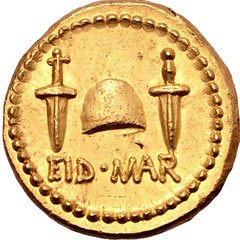 A rare and ancient gold coin that morbidly celebrates the stabbing death of Julius Caesar was returned this week to Greek officials by investigators in New York who had determined it was looted and fraudulently put up for sale at auction in 2020.
A rare and ancient gold coin that morbidly celebrates the stabbing death of Julius Caesar was returned this week to Greek officials by investigators in New York who had determined it was looted and fraudulently put up for sale at auction in 2020.
The coin, known as the Eid Mar
and valued at $4.2 million, features the face of Marcus Junius Brutus, the onetime friend and ally of Caesar who, along with other Roman senators, murdered him on the Ides of March in 44 B.C. According to historians and experts, Brutus had the coins minted in gold and silver to applaud Caesar's downfall and to pay his soldiers during the civil war that followed the killing.
The return Tuesday came at a ceremony attended by officials of the Manhattan district attorney's Antiquities Trafficking Unit and U.S. Homeland Security Investigations, who cooperated on the case.
The coin, one of 29 artifacts returned to Greek officials, was given up earlier this year by an unidentified American billionaire who, investigators said, had bought it in good faith in 2020. The British dealer who helped to arrange the sale was arrested in January, and the coin itself was recovered in February, officials said.
Experts said the coin, minted two years after Caesar's death, is about the size of a nickel and weighs about 8 grams, and is one of only three known to be in circulation. A silver version of the coin was also minted and about 100 are known to exist. Those can sell for $200,000 to $400,000.
The Eid Mar is an undisputed masterpiece of ancient coinage,
Mark Salzberg, the chairman of Numismatic Guaranty Corp., which verified the coin but does not research provenances, said in a statement in 2020.
Experts said they believe the coin was likely discovered more than a decade ago in an area of current-day Greece where Brutus and his civil war ally, Gaius Cassius Longinus, were encamped with their army.
According to investigators, the coin is first thought to have come to market between 2013 and 2014. Richard Beale, 38, director of the London-based auction house Roma Numismatics, put it up for sale on his company's website and over several years shopped it at coin shows in the United States and Europe before it was sold in October 2020. The $4.2 million was the most ever paid for an ancient coin, according to the Numismatic Guaranty Corp.
Mr. Beale is charged with grand larceny in the first degree and several other felonies and was released on his own recognizance. His lawyer, Henry E. Mazurek, declined to comment on the case.
In remarks at the ceremony, Konstantinos Konstantinou, Greece's consul general in New York, said his country has been hit hard by the illicit trading of antiquities and is seeking their return in every possible way.
He praised investigators for striking down the illegal international criminal networks whose activity distorts the identity of peoples, as it cuts off archaeological finds from their context and transforms them from evidence of people's history into mere works of art.
Outrage makes for good press and social media engagement, but cooler heads recognize that the best way to deter illegal trafficking is to create incentives that encourage the reporting and recording of finds. I couldn't agree more with IAPN President Dan Sedwick's remarks. The UK's Portable Antiquities Scheme is a model for the world. -Editor
"The IAPN unequivocally stands against misrepresentation of provenance, and we stress it is not a normal occurrence in the coin industry. A system like the UK's Treasure Act would go further to deter theft of cultural property by requiring the country of origin to pay a fair market price for any found item it deems important."
To read the complete article, see:
Rare Coin, Minted by Brutus to Mark Caesar's Death, Is Returned to Greece
(https://www.nytimes.com/2023/03/22/arts/design/rare-coin-returned-greece-eid-mar.html)
To read the earlier E-Sylum articles, see:
GOLD IDES OF MARCH COIN REALISES $4M
(https://www.coinbooks.org/v23/esylum_v23n44a22.html)
RICHARD BEALE OF ROMA NUMISMATICS ARRESTED
(https://www.coinbooks.org/v26/esylum_v26n11a16.html)
IAPN STATEMENT ON FALSE PROVENANCES
(https://www.coinbooks.org/v26/esylum_v26n12a13.html)
DISCOVERING THE 1870-S HALF DIME
In his column The Curious Collector for the March 2023 E-Gobrecht from the Liberty Seated Collectors Club, Len Augsburger looked into the discovery of the unique 1870-S Half Dime. -Editor
The 1870-S half dime is well-known as one of the few unique coins in the U.S. series and is a relatively modern entry into this exclusive club, being discovered only in the late 20th century. Heritage Auctions recently sold the piece as part of the Tom Bender collection, at the 2023 FUN sale, where it was graded PCGS MS64 CAC and realized $3.12 million.
The discovery story of the coin was not well publicized until Bill Burd, a longtime Chicago dealer, wrote in the June 1998 Numismatist:
"An 1870-S half dime went undiscovered until 1978, when it was purchased by Phyllis Storm of Orland Coin and Stamp Shop in Orland Park, Illinois. According to Storm, a man walked into the shop with a small box of coins. She paid him a fair price for the lot, believing the half dime was a common type coin. When she and her husband, Rich, could not find a listing for an 1870-S half dime, they consulted Ed Milas of RARCOA. The coin was determined to be genuine, and Milas purchased it from the Storms."
So, where exactly was the Orland Park Coin and Stamp store located? This is a more complicated question that one might expect, as the business is long gone. A clip from the Blue Island Sun, September 11, 1977, reported:
Richard Storm has recently opened a new coin and stamp shop in Orland Square. The shop is located on the lower level just off center court on the Carson side of the mall. Richard Storm is an A.N.A. life member and a dealer in numismatics and a philatelist. The shop, Orland Coin and Stamps deals primarily in U.S. coins and stamps.
This article placed the store in the Orland Square mall. Tom DeLorey, who worked at Harlan Berk Rare Coins in Chicago and lived in the in Orland Park area (Blue Island), wondered if the store was actually located in an adjacent mall (email to author, November 10, 2022):
The city of Orland Park, IL had two competing malls on either side of 151st Street. Orland Square Mall on the north side of 151st was the larger and more prestigious. It looks as though the coin shop started out there, and that may have been where the 1870-S Half Dime surfaced. Orland Park Place (mall) was south of 151st. I married a lady from Blue Island in late 1986 and moved there. We used to go out to Orland Square to walk the mall and have lunch and/or shop. We only went to Orland Park Place to visit the coin shop a couple of times, as most of the shops were already empty and it was very depressing. Then their last anchor store closed and the mall closed.
I checked with the Orland Park, IL library regarding phone books from that period, and they had none. A second try, at the Newberry Library in Chicago, was more successful. A reference librarian at Newberry reported that phone books for 1979, 1982, and 1983 placed Orland Park Coin and Stamp at 412 Orland Square Shopping Center, on the north side of 151st Street. This was helpful, but didn't completely explain Tom's recollection, so I asked them to check successive years.
Newberry then reported that the store did in fact move and was listed in the 1987-1988 directory at 1120 Orland Park Place Mall, now on the south side of 151st.
As the 1870-S half dime first publicly appeared on exhibit at the 1978 ANA convention, prior to the move of Orland Park Coin and Stamp, we can thus pinpoint the discovery site
of the coin to unit 412 of the Orland Square Mall, which is still standing.
Following the sale of the 1870-S half dime, the Storms apparently sold the Orland Park store and moved to Florida, as reported by the Numismatic News, April 2, 1983: Richard and Phyllis Storm have announced the opening of their new coin and stamp shop, Bonita Coins and Stamps, in the Springs Plaza, Bonita Springs, Fla. The shop will feature gold and silver coins and stamps of all types, coin jewelry and collector supplies. Before moving to Florida, the Storms operated Orland Coins and Stamps in Orland Park, Ill.
Tom DeLorey did one final piece of investigation and reported Just for the hell of it, I called the [Orland Square] mall and asked what is in unit 412 now. It is Mrs. Field's Cookies. I know it well. My first wife and I stopped there many a time.
Of course, none of this explains who walked into the mall and sold the coin to the Storms in 1978, but at least we now know exactly where it happened.
To read the complete lot description, see:
1870-S H10C MS64 PCGS. CAC....
(https://coins.ha.com/itm/seated-half-dimes/half-dimes/1870-s-h10c-ms64-pcgs-cac-pcgs-4397-/a/1356-3341.s)
For more information on the Liberty Seated Collectors Club, see:
http://www.lsccweb.org/
GEORGE WASHINGTON ON EARLY PAPER MONEY
A Stack's Bowers blog article by Chris Bulfinch discusses one of the first appearances of George Washington's likeness on paper money. He mentions the book by Heinz Tschachler that we discussed in 2020. I added an image and link to our earlier article. -Editor
George Washington's aversion his likeness appearing on federally-issued coinage is well-remembered. Resisting the monarchical overtones of such appearances, United States coinage initially featured an allegorical bust of Liberty, establishing a precedent of not including any chief executives on coinage which would persist for decades after 1792.
While the Constitution gave the right to coin money to the federal government (and denied it to the states), private banks were free to feature whatever motifs they wished on their notes. The first bank to disregard Washington's sensibility was, somewhat ironically, the Washington Bank in Westerly, Rhode Island. In 1800, less than a year after Washington's passing, the bank issued notes bearing his portrait. These notes are thought by obsolete paper money experts to be the first banknotes issued after the Revolution and Washington's death that featured the nation's first Commander-in-Chief.
Crude representations of Washington had appeared on notes produced during the revolution and his likeness was also featured on tokens and medals produced after the conflict celebrating his service.
 The plates for the Washington Bank notes were prepared by Amos Doolittle,
The plates for the Washington Bank notes were prepared by Amos Doolittle, The Revere of Connecticut,
an engraver perhaps best known for his engravings of the Battle of Lexington and Concord. The uniface notes bear simple designs, typical of banknotes of the era, with Washington's portrait in a circular cartouche which appears on different spots on different denominations.
Readers interested in learning more about Washington's many appearances on currency might read Heinz Tschachler's 2020 George Washington on Coins and Currency, one of this blogger's favorite numismatic books.
To read the complete article, see:
DID YOU KNOW THAT GEORGE WASHINGTON'S FIRST APPEARANCE ON U.S. CURRENCY WAS ON AN OBSOLETE BANKNOTE FROM WESTERLY, RHODE ISLAND?
(https://stacksbowers.com/did-you-know-that-george-washingtons-first-appearance-on-u-s-currency-was-an-obsolete-banknote-from-westerly-rhode-island/)
To read the earlier E-Sylum article, see:
NEW BOOK: WASHINGTON ON COINS AND CURRENCY
(https://www.coinbooks.org/v23/esylum_v23n36a03.html)
CONFEDERATE CURRENCY COUNTERFEITER CAUGHT
A man was arrested in Missouri for allegedly selling counterfeit Confederate States of America notes. Thanks to Doug Davis of the Numismatic Crime Information Center for the notifications and links. -Editor
A Carthage man who is accused of counterfeiting and fraud by several people in various states across the U.S., has now been arrested and charged.
Carthage Police Chief, Bill Hawkins confirmed that Jeremy J. Tewell, 44, of Carthage was arrested Thursday (3/23) and is charged with forgery and felony stealing. Chief Hawkins said a person from the Carthage area contacted the police department, stating they too had purchased a counterfeit Confederate States of America bank note. Hawkins says the note was confirmed to be counterfeit by an unknown third party who specializes in civil war era currency.
It's not unusual to work a crime of forgery or various types of fraud, but this one is — in the fact that it deals with various types of currency, and it deals with multi-state victims. So, just trying to coordinate this into just one big case, it's challenging,
said Chief Hawkins.
An earlier article discussed the scam. Congratulations to those who came forward and put a stop to it. The articles use stock photos of common CSA notes and don't mention which CSA notes had been offered, but a number of rare issues are possibilities. -Editor
Jeremy Tewell of Carthage, Missouri is named by at least four different dealers that specialize in valuable collections, including coins, currency, and fine jewelry. All of them accuse Tewell of selling or attempting to sell items of rarity and/or worth. In our independent investigation, KSNF/KODE spent several weeks researching these claims. Not only did we speak with the alleged victims — all of them sharing similar stories about what they say is fraudulent activity involving Tewell — we also spoke with coin/currency and collection experts, as well as law enforcement, including the United States Secret Service.
Those who claim to have been defrauded by the Carthage man are spreading the word on social media sites, like Facebook and Instagram — in an attempt to warn others about the lack of authenticity about items that Tewell has recently sold or tried to sell online.
Our investigation into these claims lead us to Raleigh, North Carolina resident, Brad Ciociola who owns Carolina Rare Coins and Currency.
According to Ciociola, Tewell contacted him on Facebook about selling a rare Confederate States of America note (currency that was used in the southern states during the American Civil War). It was estimated to be worth several thousand dollars.
I made an agreement with the guy. I kind of felt him out. He said he wanted 10 grand. I said, ‘hey, I'll give you $9,500 and we made a deal.' I've done enough of these transactions, I know better than to pay upfront. He asked me how I propose doing the transaction. I said, ‘you overnight me the notes and as soon as I get it, I'll send you a check.
Ciociola said as soon as he received the package that contained the CSA note, it didn't take long for him to discover that it was fake.
As soon as I opened the package and looked at the note, I could tell it was counterfeit. There were so many things that were wrong about the note, you could definitely tell it was 100% not real. I'm probably one of the top ten Confederate note experts in the country, and I know what to look for when it comes to a real note and a fake one,
Ciociola stated.
Ciociola said he did not send the CSA note back to Tewell, but instead filed a police report with the Johnson County (North Carolina) Sheriff's Department, and gave it to authorities there as evidence of fraud.
To read the complete articles, see:
At least four people have come forward with claims of fraud, counterfeiting
(https://www.fourstateshomepage.com/news/national/carthage-man-accused-of-fraud-in-multiple-states/)
Carthage man arrested for allegedly selling counterfeit Civil War era currency
(https://www.fourstateshomepage.com/local-news/carthage-man-arrested-for-allegedly-selling-counterfeit-civil-war-era-currency/)
THE BOOK BAZARRE
THE TWO DOLLAR BILL DOCUMENTARY
Pablo Hoffman writes:
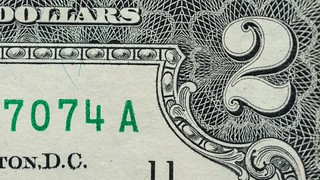 "Here's a so-so general readership article on the 2-Dollar bill. It contains a link to an absolutely terrific documentary all about the deuce note that is very worth watching, fascinating throughout its hour-and-forty-minute length. It let me in on some facts I never knew before, even after 65 years in the business of paper money.
"Here's a so-so general readership article on the 2-Dollar bill. It contains a link to an absolutely terrific documentary all about the deuce note that is very worth watching, fascinating throughout its hour-and-forty-minute length. It let me in on some facts I never knew before, even after 65 years in the business of paper money. Myrta's story,
near the end, should not be missed!"
This is the documentary produced by filmmaker John Bennardo. If you missed it earlier, give it a shot now. It's also a great way to introduce friends to the hobby. Earlier articles about it are linked below. -Editor
To watch the complete film, see:
The Two Dollar Bill Documentary - full feature film
(https://www.youtube.com/watch?v=4b3TczZpC_Y)
To read the complete article, see:
Your $2 Bill Might Actually Be Worth a Lot More
(https://lifehacker.com/your-2-bill-might-actually-be-worth-a-lot-more-1850170790)
To read the earlier E-Sylum articles, see:
THE TWO DOLLAR BILL DOCUMENTARY
(https://www.coinbooks.org/esylum_v19n36a19.html)
SCREENING THE TWO DOLLAR BILL DOCUMENTARY
(https://www.coinbooks.org/esylum_v19n37a11.html)
ZIMBABWE'S LATEST SMALL CHANGE PANIC
Zimbabwe's money situation is a debacle that just keeps debacling - a permanent economic dumpster fire. We've been writing about this for over a decade, and here we are with another story (this time from the Wall Street Journal) about the country's dismal economy. Great headline: "The Country Behind the $100,000,000,000,000 Bill Hits a New Stage of Dysfunction."
As mentioned earlier, the current situation is an exact mirror of the Small Change Panic that swept the United States during the Civil War. Without a proper government-provided means of exchange, businesses and citizens make do, improvising substitutes in order to keep markets functioning. -Editor
On a recent afternoon, Rutendo Manyowa handed over a U.S. $5 bill to pay for her $3.50 order of chicken, fries and a soft drink at a popular fast-food joint in the Zimbabwean capital. But instead of a $1 bill and two quarters in change, the cashier handed Ms. Manyowa three slips of paper, bearing the restaurant's name and the amount of money she could use to buy her next meal.
Zimbabwe, the country that brought the world the one-hundred-trillion-dollar bill, has reached a new stage of monetary dysfunction. Because of a lack of small change, businesses have started printing their own money
—scraps of paper, sometimes handwritten, that customers can use to pay for future purchases. Others are handing out change in-kind, making customers whole with juice boxes, pens or slices of cheese.
The paper chits and other pecuniary workarounds are the latest products of two decades of extreme mismanagement of Zimbabwe's currency.
... in early 2019, the central bank reintroduced the Zimbabwe dollar, changing U.S. dollar-denominated savings and domestic government debts into a local currency of rapidly declining value.
Today, $1 costs more than 900 Zimbabwean dollars and inflation hit 230% in January. Most businesses once again demand payments in U.S. dollars, although the Zimbabwe dollar remains the country's official currency.
That's where the issue of change comes in. Zimbabwean commercial banks and the central bank import U.S. dollar bills for local use, but their heavy weight and low value makes flying in coins from overseas uneconomical. One-dollar notes—the most widely used bills in a country where even before the pandemic nearly 40% of people lived on less than $1.80 a day—are also often in short supply.
The paper IOUs have proven an unsatisfactory fix. For starters, they aren't fungible. Ms. Manyowa, a 23-year-old college student, spent 15 minutes waiting by the till of a Harare Chicken Inn until another customer paid with a $1 bill she could use for the bus fare home.
In contrast to bank notes, which are usually made from cotton or plastic, paper chits also can't withstand an extended spin in the washing machine.
Adelaide Moyo, a journalist for a Zimbabwean newspaper, says she has more than once found the faded remnants of vouchers from Chicken Inn or the local franchise of Netherlands-based supermarket chain Spar stuck to her clothes when she pulls them out of the wash.
To avoid such losses, Ms. Moyo says she has accepted slices of cheese, extra sauce and, once, a hard-boiled egg instead of more paper chits. Those barter trades usually don't offer good value for money, like the slice of cheese that cost her $0.50, but, she says, they're better than carrying around, or losing, vouchers from multiple places. You'd rather just get the food,
she said.
The chits issued by Spar feature an intricate pattern and holograms. The supermarket chain has had to replace the electronic tags on its shelves because the old ones ran out of digits to display prices in Zimbabwean dollars.
Smaller stores keep a book with the names of customers they still owe money to behind the counter or scrawl amounts yet to be reimbursed on receipts. Some clients, fearing that a shopkeeper won't remember, have taken to filming those exchanges on their phones.
Harare-based economist Gift Mugano says that despite the chits' drawbacks, most Zimbabweans still prefer them to getting their change in local currency. People don't trust the government. But the very same people trust the private sector,
he said. If I'm given a token in a fast-food restaurant, I know tomorrow when I come back it is accepted.
I can't help but recall the classic satire on government plans to airlift shipments of vowels from Hawaii to Bosnia. But could collectors airlift small change to Zimbabwe? The time to build collections of money substitutes is while they actively circulate - perhaps some trades favorable to both sides could be arranged, helping everyday Zimbabweans while enriching private collections and museum holdings. -Editor
To read the complete article (subscription required), see:
The Country Behind the $100,000,000,000,000 Bill Hits a New Stage of Dysfunction
(https://www.wsj.com/articles/zimbabwe-money-aa13a052)
To read the earlier E-Sylum articles, see:
ZIMBABWE'S SMALL CHANGE PROBLEM
(https://www.coinbooks.org/esylum_v15n18a25.html)
ZIMBABWE'S MULTI-CURRENCY CONFUSION
(https://www.coinbooks.org/esylum_v17n08a26.html)
LOOSE CHANGE: MARCH 26, 2023
Here are some additional items in the media this week that may be of interest. -Editor
For the first time as a monarch, King Charles III will travel to York to hand out Maundy money in the ancient ritual. -Editor
Charles and the Queen Consort will attend the Royal Maundy Service in York Minister on April 6.
During the Maundy Thursday event, the King will present 74 men and 74 women with specially-minted silver coins to the value of 74p – signifying Charles's age – to thank the pensioners for their service in local communities.
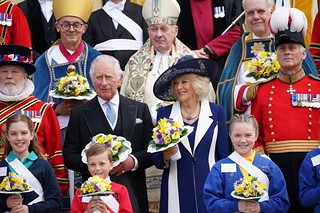 Last year, Charles, as the Prince of Wales, stepped in to carry out the custom for the first time, acting on the late Queen's behalf after she experienced mobility problems and could not attend.
Last year, Charles, as the Prince of Wales, stepped in to carry out the custom for the first time, acting on the late Queen's behalf after she experienced mobility problems and could not attend.
He handed out coins to the value of 96p – to represent his mother's age – in St George's Chapel, Windsor Castle.
This year will be the first Maundy service since the death of Elizabeth II in September and the start of the Carolean age.
To read the complete article, see:
King to visit York to distribute Maundy money for first time as monarch
(https://www.bracknellnews.co.uk/news/national/23408449.king-visit-york-distribute-maundy-money-first-time-monarch/)
Back in the early days of the COVID-19 pandemic the Internet Archive rolled the dice and opened up its digitized copyrighted works to the world via its controlled digital lending infrastructure, triggering a lawsuit from publishers. While provoking a test case may have been the goal, they've lost the first round and now plan an appeal.
Controlled digital lending could be a nice way for institutional libraries such as those at the American Numismatic Association and American Numismatic Society to enable their members to remotely access copies of books they physically own, but the judge and copyright owners reject the claim that such lending would fall under the "Fair Use" doctrine. Stay tuned for the next round. -Editor
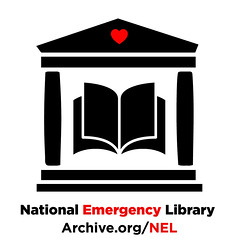 A federal judge has ruled against the Internet Archive in its high-profile case against a group of four US publishers led by Hachette Book Group. Per Reuters, Judge John G. Koeltl declared on Friday the nonprofit had infringed on the group's copyrights by lending out digitally scanned copies of their books.
A federal judge has ruled against the Internet Archive in its high-profile case against a group of four US publishers led by Hachette Book Group. Per Reuters, Judge John G. Koeltl declared on Friday the nonprofit had infringed on the group's copyrights by lending out digitally scanned copies of their books.
The lawsuit originated from the Internet Archive's decision to launch the National Emergency Library
during the early days of the pandemic. The program saw the organization offer more than 1.4 million free ebooks, including copyrighted works, in response to libraries worldwide closing their doors due to coronavirus lockdown measures.
Before March 2020, the Internet Archive's Open Library program operated under what's known as a controlled digital lending
system, meaning there was often a waitlist to borrow a book from its collection. When the pandemic hit, the Internet Archive lifted those restrictions to make it easier for people to access reading material while stuck at home. The Copyright Alliance was quick to take issue with the effort.
... Judge Koeltl rejected the Internet Archive's stance, declaring there is nothing transformative
about lending unauthorized copies of books. "Although [the Internet Archive] has the right to lend print books it lawfully acquired, it does not have the right to scan those books and lend the digital copies en masse," he wrote.
To read the complete article, see:
Internet Archive violated publisher copyrights by lending ebooks, court rules
(https://www.engadget.com/internet-archive-violated-publisher-copyrights-by-lending-ebooks-court-rules-164629790.html)
To read the earlier E-Sylum articles, see:
NATIONAL EMERGENCY LIBRARY ANNOUNCED
(https://www.coinbooks.org/v23/esylum_v23n14a25.html)
NATIONAL EMERGENCY LIBRARY CLOSES
(https://www.coinbooks.org/v23/esylum_v23n24a22.html)
We've heard of horse thieves and book thieves, but a manuscript thief? Len Augsburger passed along this New York Times article about the man who hoodwinked prominent authors into giving him their unpublished manuscripts. -Editor
 Filippo Bernardini, a former publishing employee who pleaded guilty in a fraud case in which the government accused him of stealing more than 1,000 manuscripts, avoided prison on Thursday but was ordered to be deported.
Filippo Bernardini, a former publishing employee who pleaded guilty in a fraud case in which the government accused him of stealing more than 1,000 manuscripts, avoided prison on Thursday but was ordered to be deported.
He was also ordered to pay $88,000 in restitution to the biggest name in publishing, Penguin Random House, to reimburse the company for legal and expert fees it paid as a result of the scheme.
For more than five years, Mr. Bernardini impersonated publishing professionals in the pursuit of unpublished manuscripts. He would pretend to be a specific editor, for example, and would email that person's authors to ask for their latest drafts. The government said he impersonated hundreds of people.
In a letter this month to Judge Colleen McMahon of Federal District Court in Manhattan, Mr. Bernardini said he had stolen the manuscripts because he wanted to read them.
I never wanted to and I never leaked these manuscripts,
he wrote. I wanted to keep them closely to my chest and be one of the fewest to cherish them before anyone else, before they ended up in bookshops. There were times where I read the manuscripts and I felt a special and unique connection with the author, almost like I was the editor of that book.
To read the complete article, see:
No Prison Time for Book Thief
(https://www.nytimes.com/2023/03/23/books/filippo-bernardini-unpublished-manuscripts-deported.html)


